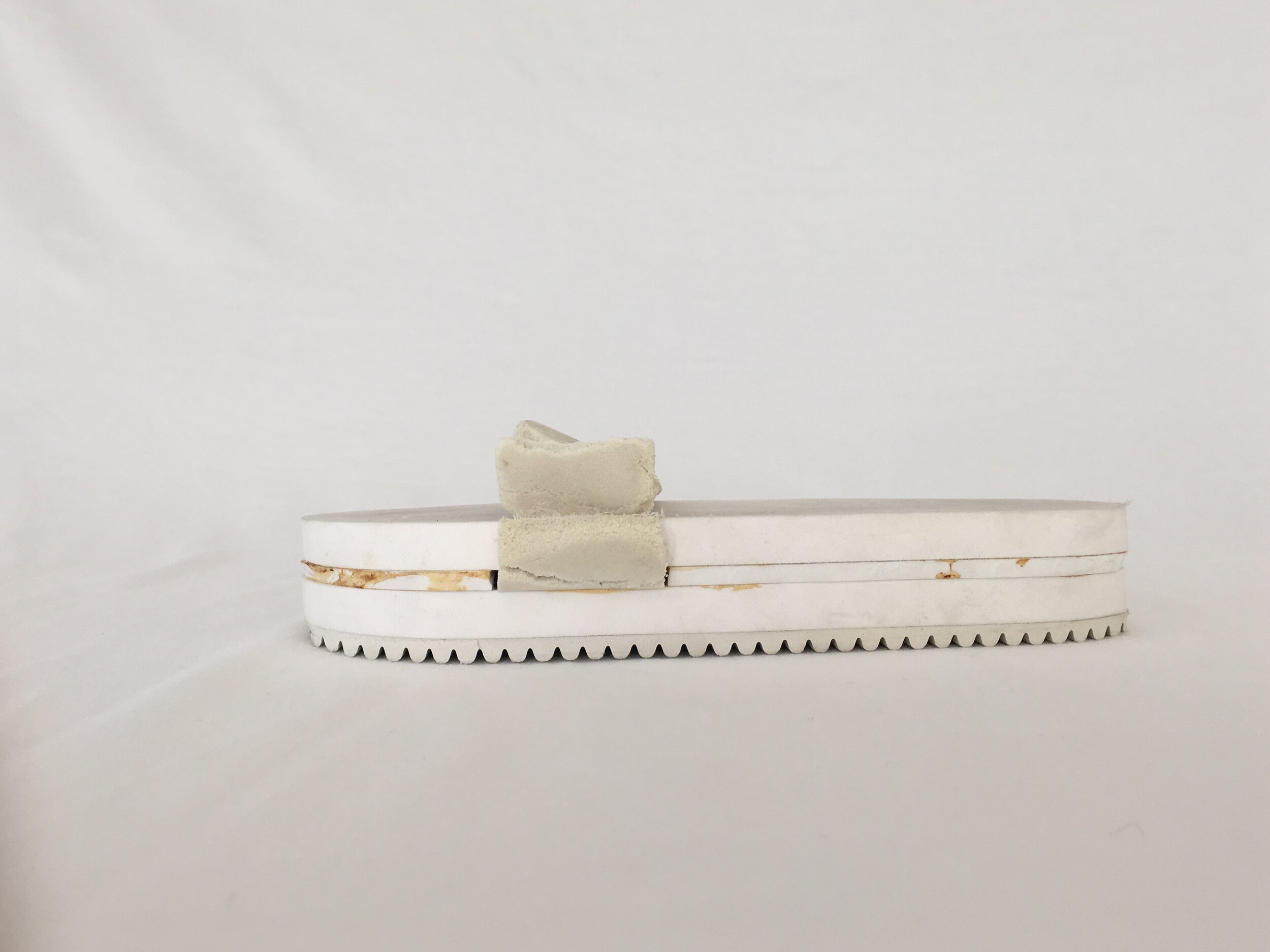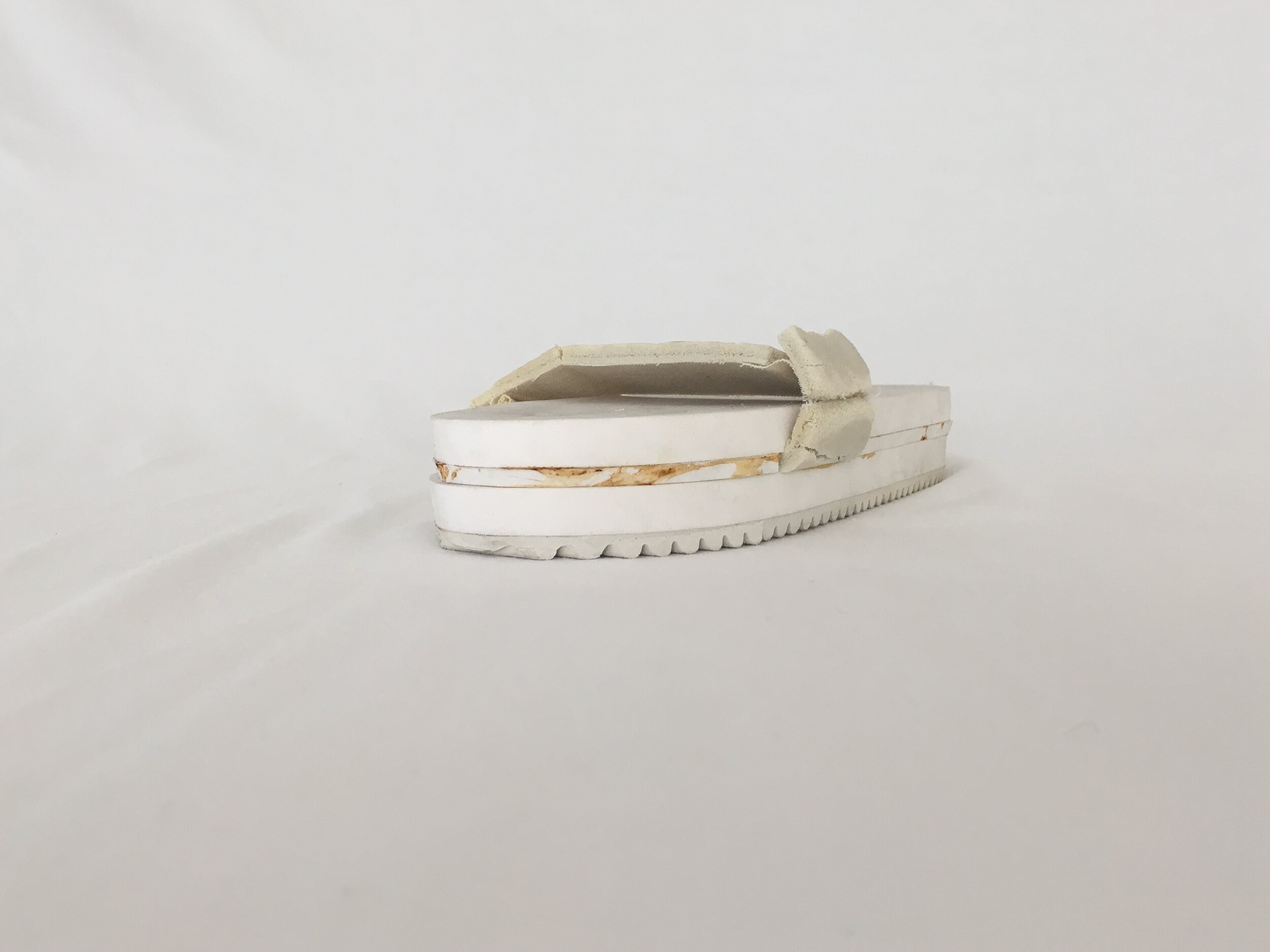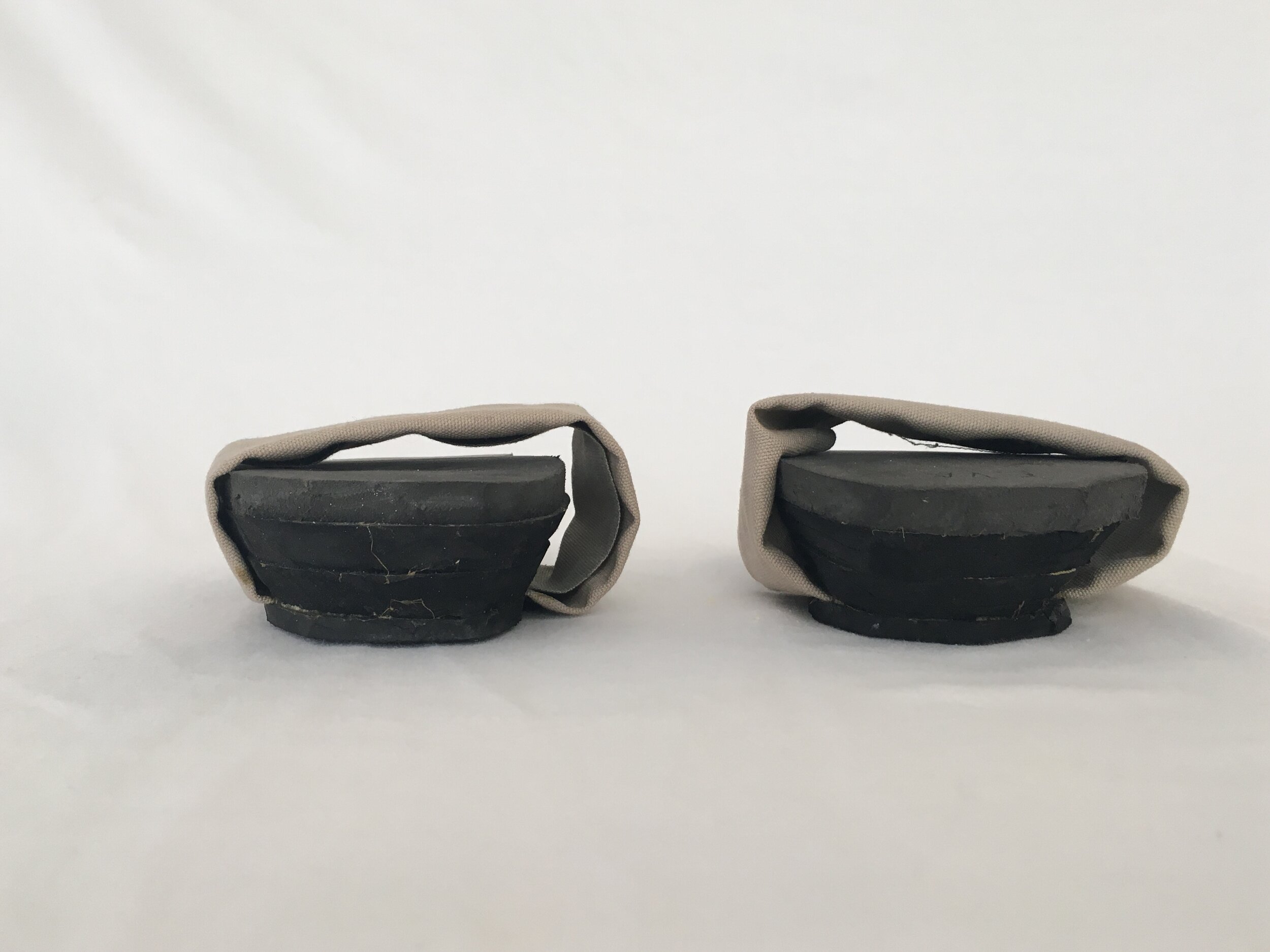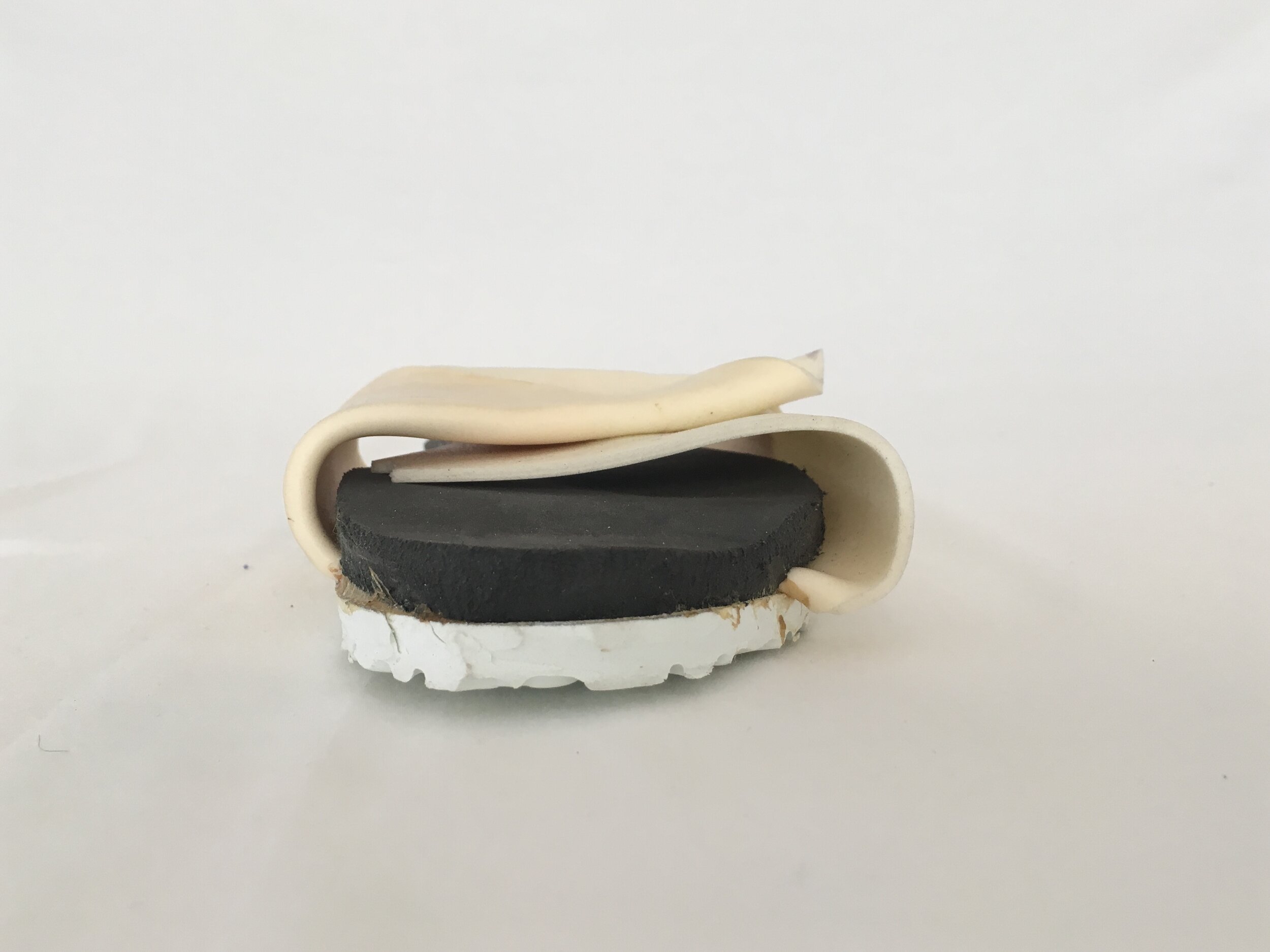Towards an uninterruptive plan shape for unfettered toes (2013)
Developed from the layering and averaging of 10 different traced feet and a handful of shoes I liked.

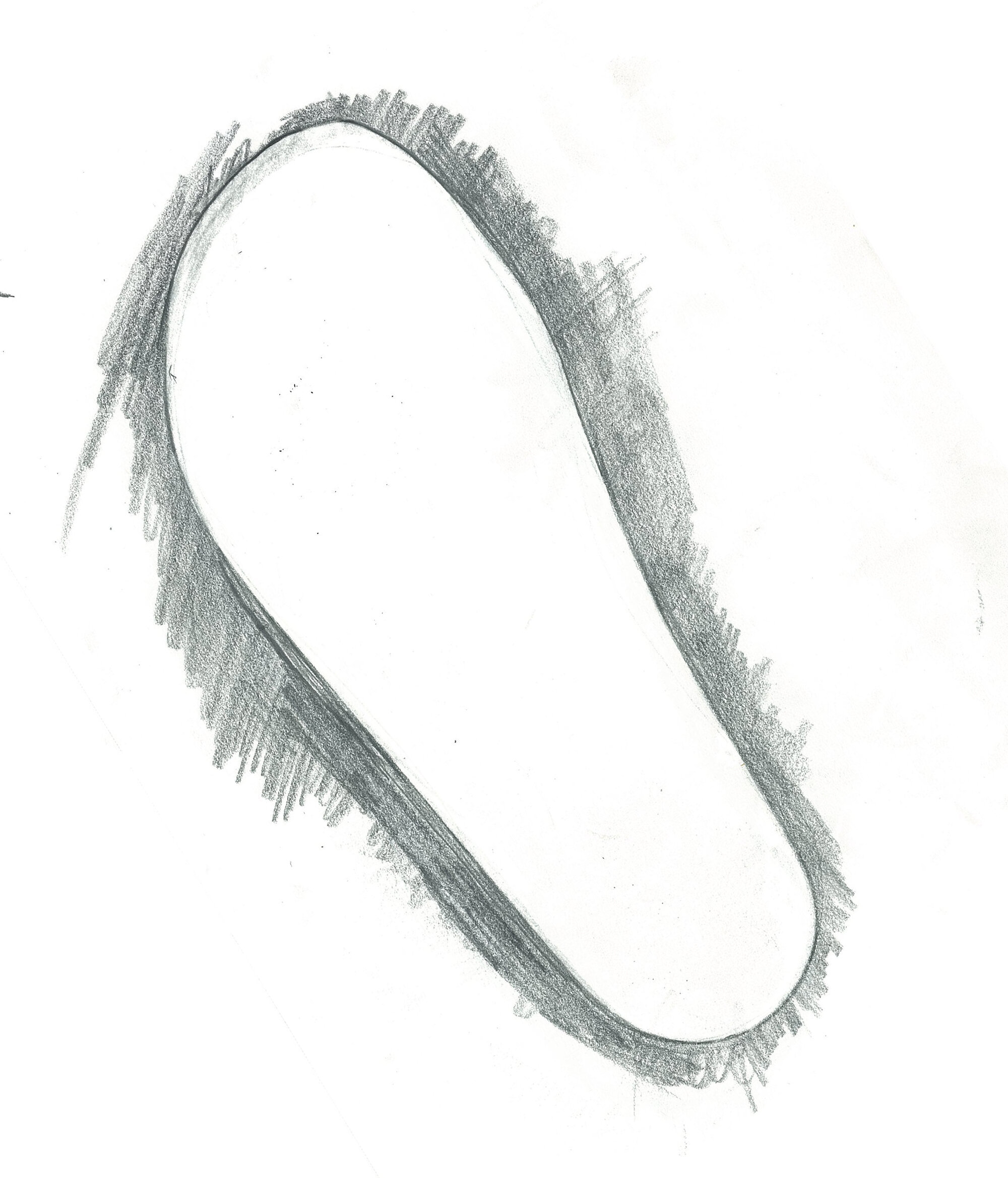
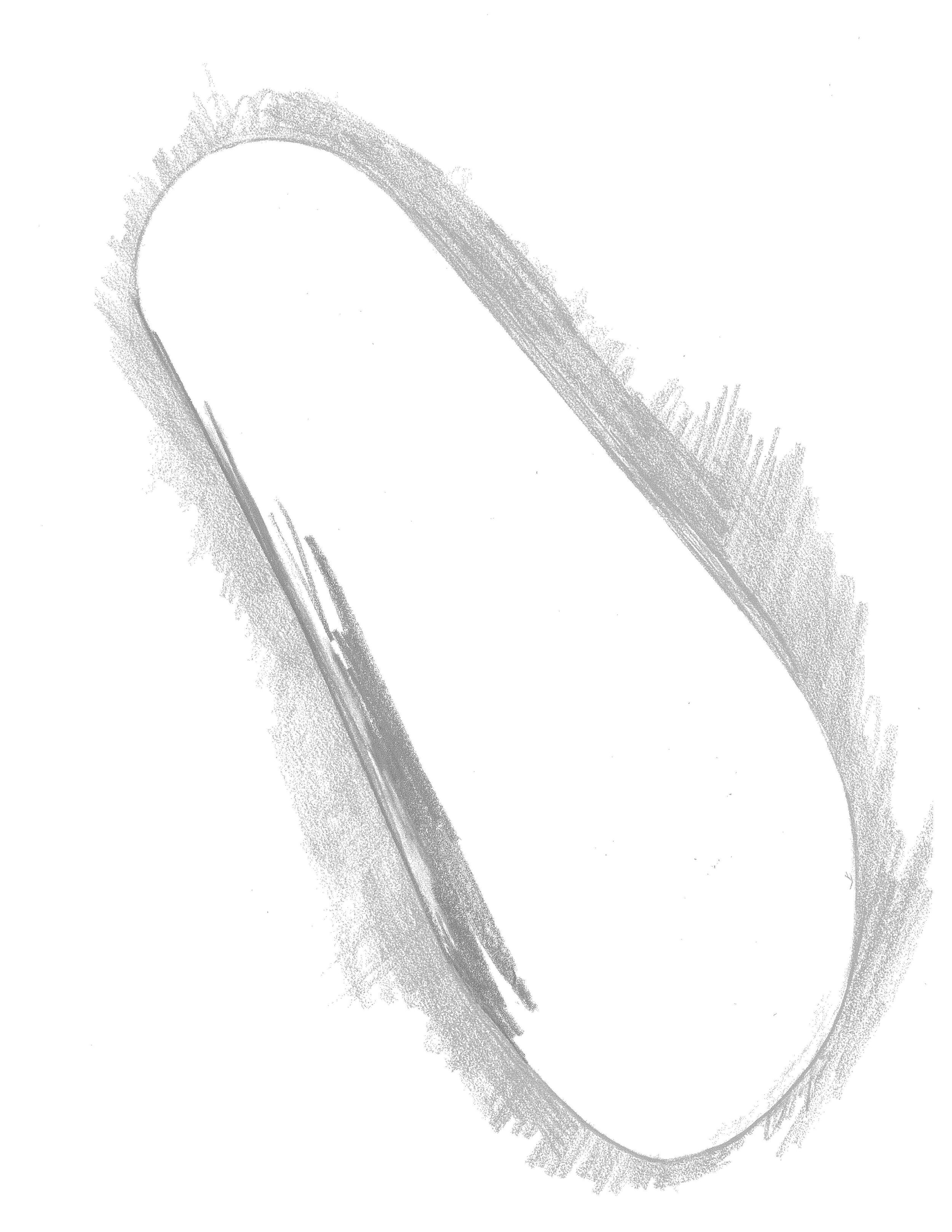



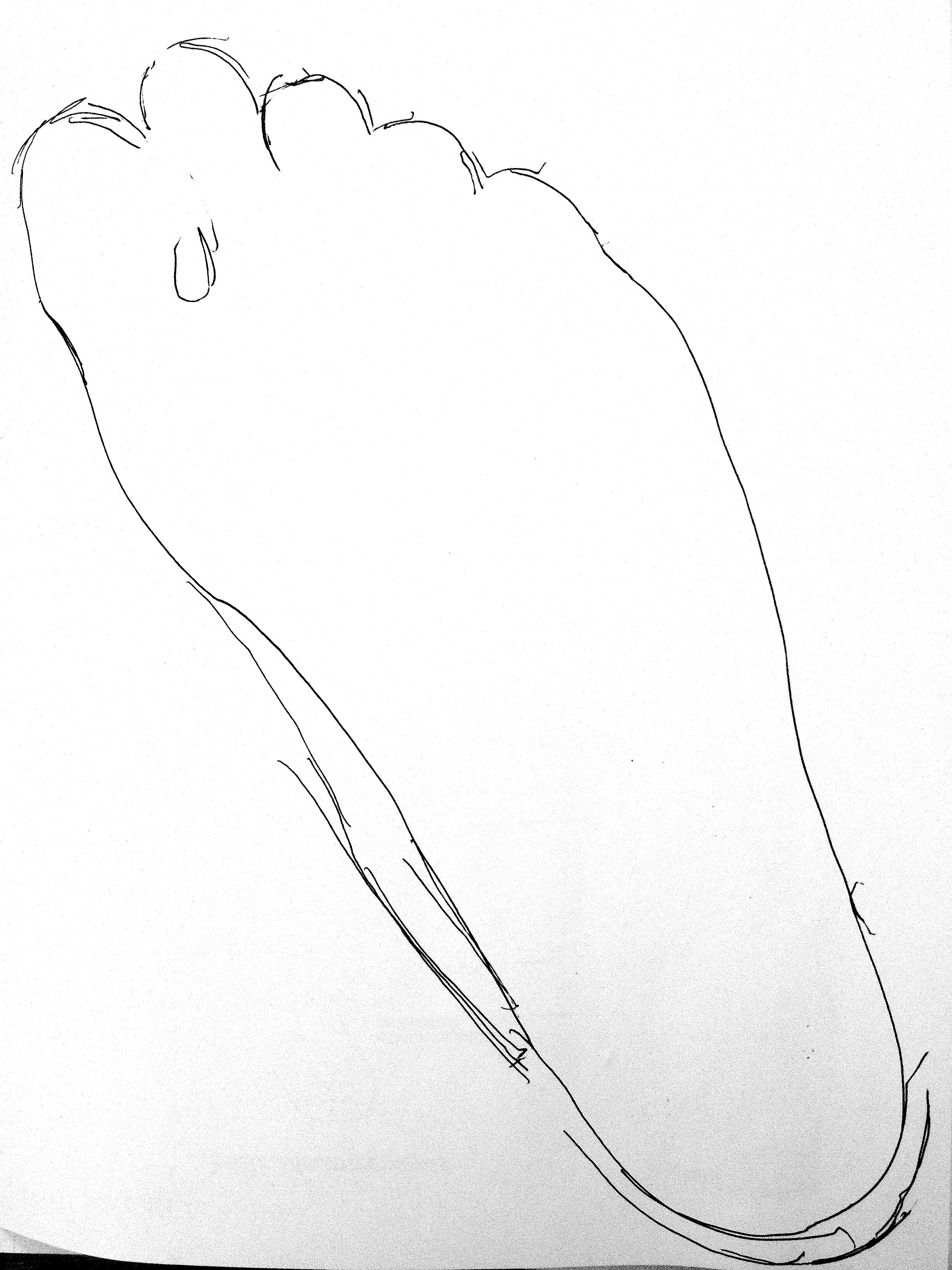



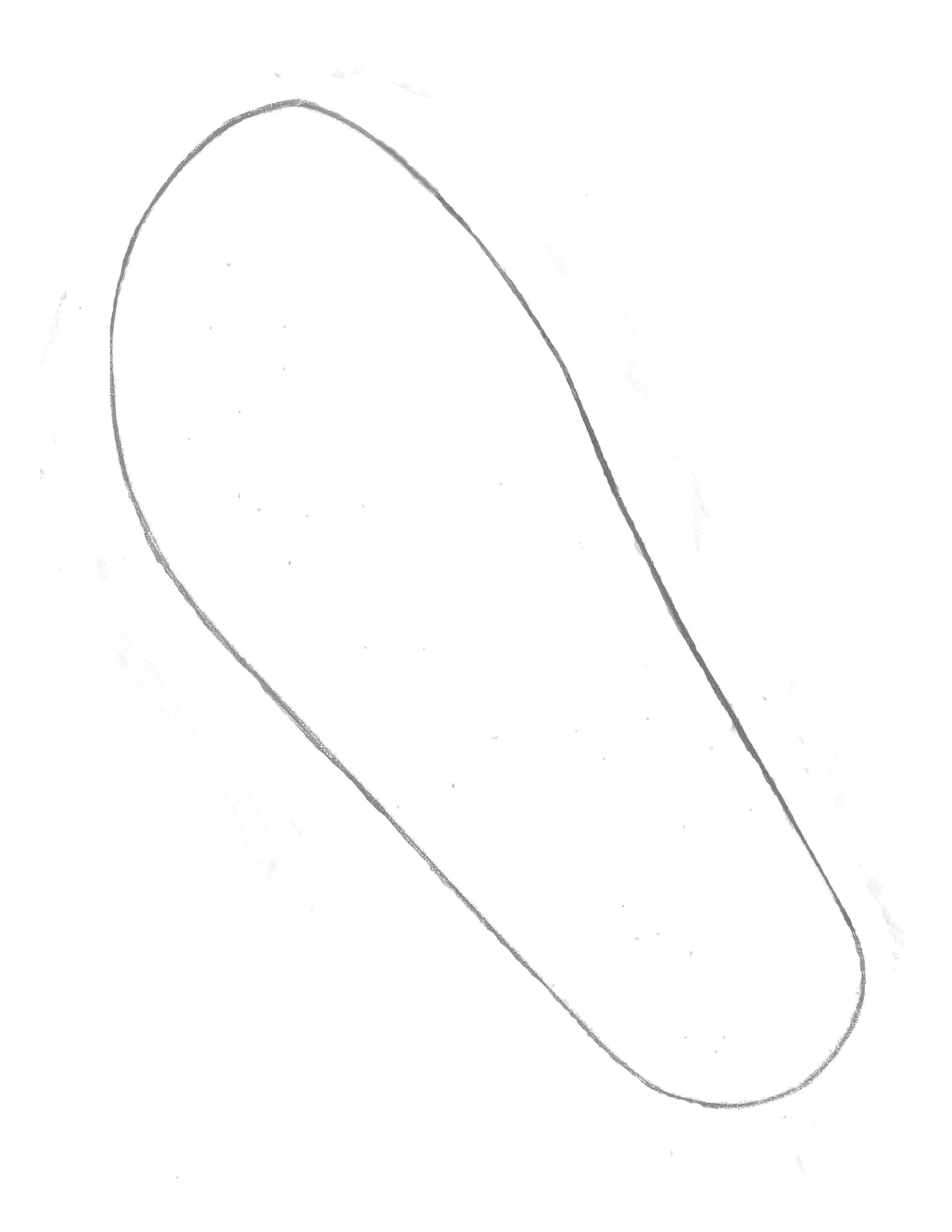

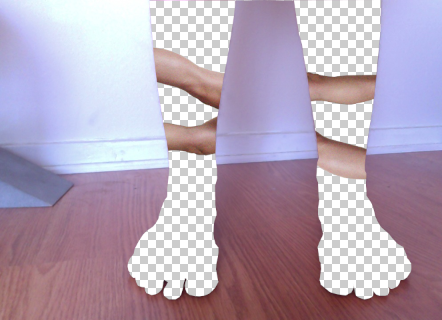
This was before I fully grasped that the shape of feet, as they commonly tend to be in habitually shod societies, are NOT the shape of feet as they would be had they not been moulded by common shoeforms during their development. I see now that this planshape I've designed is not QUITE the correct angle at the hallux to allow for healthy toe spread, but it’s en route, less hindering than most, and is aesthetically balanced / appealing in a M.A.Y.A. framework.
photoshoot: twins












The wooden sole you see in the Twins shoot and the wear tests was en route to a flexible latex sole, experimenting with ratios. Admittedly it wasn’t until I wore the wooden sole sandals with double straps for a week that I realized they interrupted gate mechanics by prohibiting flexion of the foot. You don’t know til ya know! Sometimes it takes a physical experience to grasp what eyes fail to perceive. There are many inflexible platform and clog shoes in the world, and one thinks “These exist, these are common, they must be fine.”
With open eyes it’s easy enough to see that a bare foot bends in in complex ways as it walks which are entirely hindered by an inflexible sole. When the bend at the forefoot is outsourced to a carved boatshape under a sole while the foot remains straight, strain travels up the system, especially to the hips. This didn’t sink in for me until I felt it.
Wear tests to locate weaknesses.
The shoe’s construction had to be studied, in any event, for pondering the next iterations, even if they’d be in more flexible latex. I understand now that even in a flexible latex sole these thick platforms would have hindered muscular activation in the foot somewhat, in the question of a mechanically ideal shoe. Not all shoes need to be mechanically ideal, but it’s worth pointing out the fact of functional shortcomings, even if in a harm reduction (versus optimization) approach to shoe design I tend towards “less bad, with madd appeal” than “ideal, with minimal appeal”. I think both branches are necessary in the larger world of shoe brands to help propel understanding barefoot/minimalist logic.
But about the shoes below: The straps came frayed apart at the ends of the interior seams, and as well accumulated a lot of dirt rapidly.












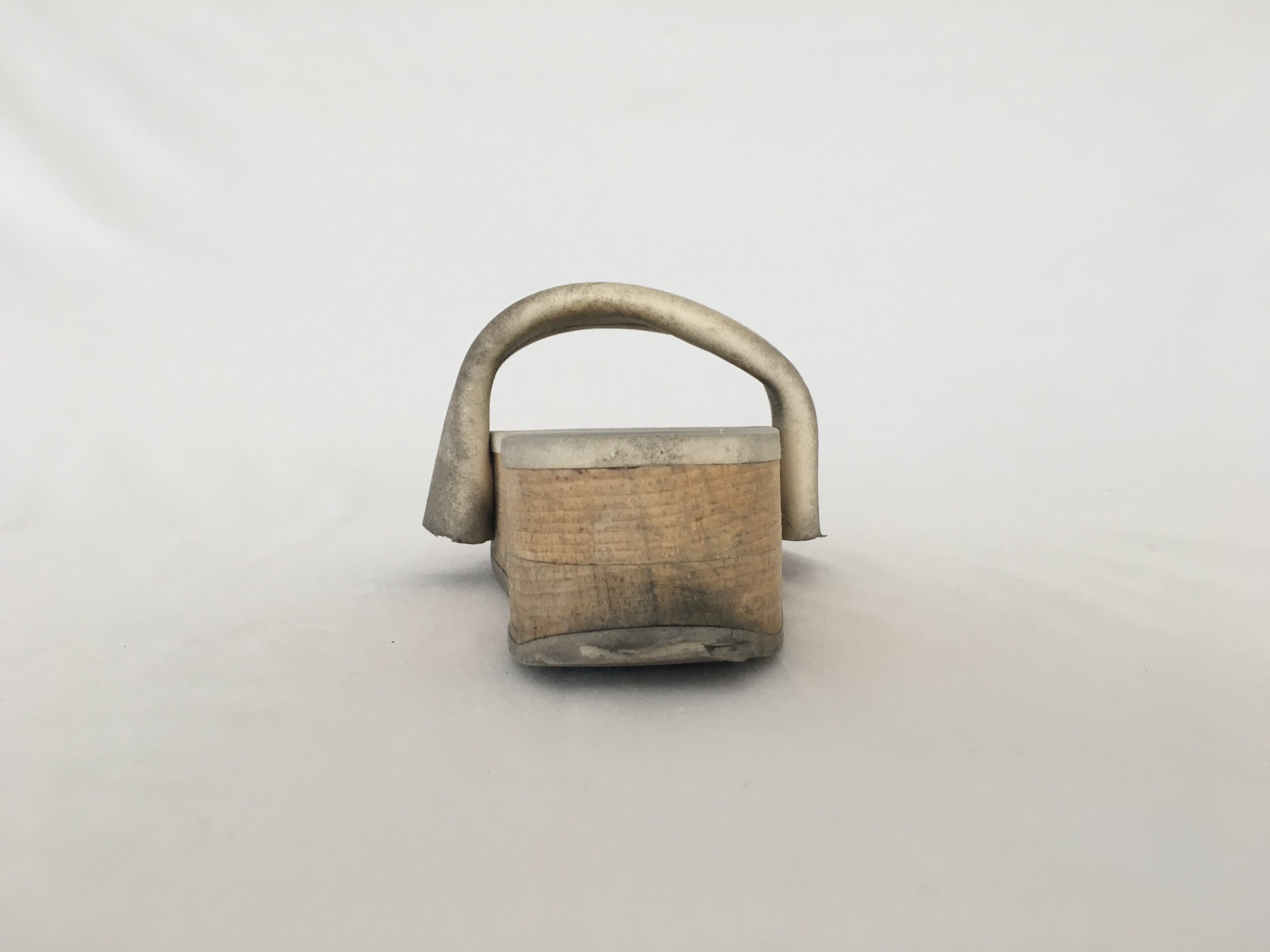
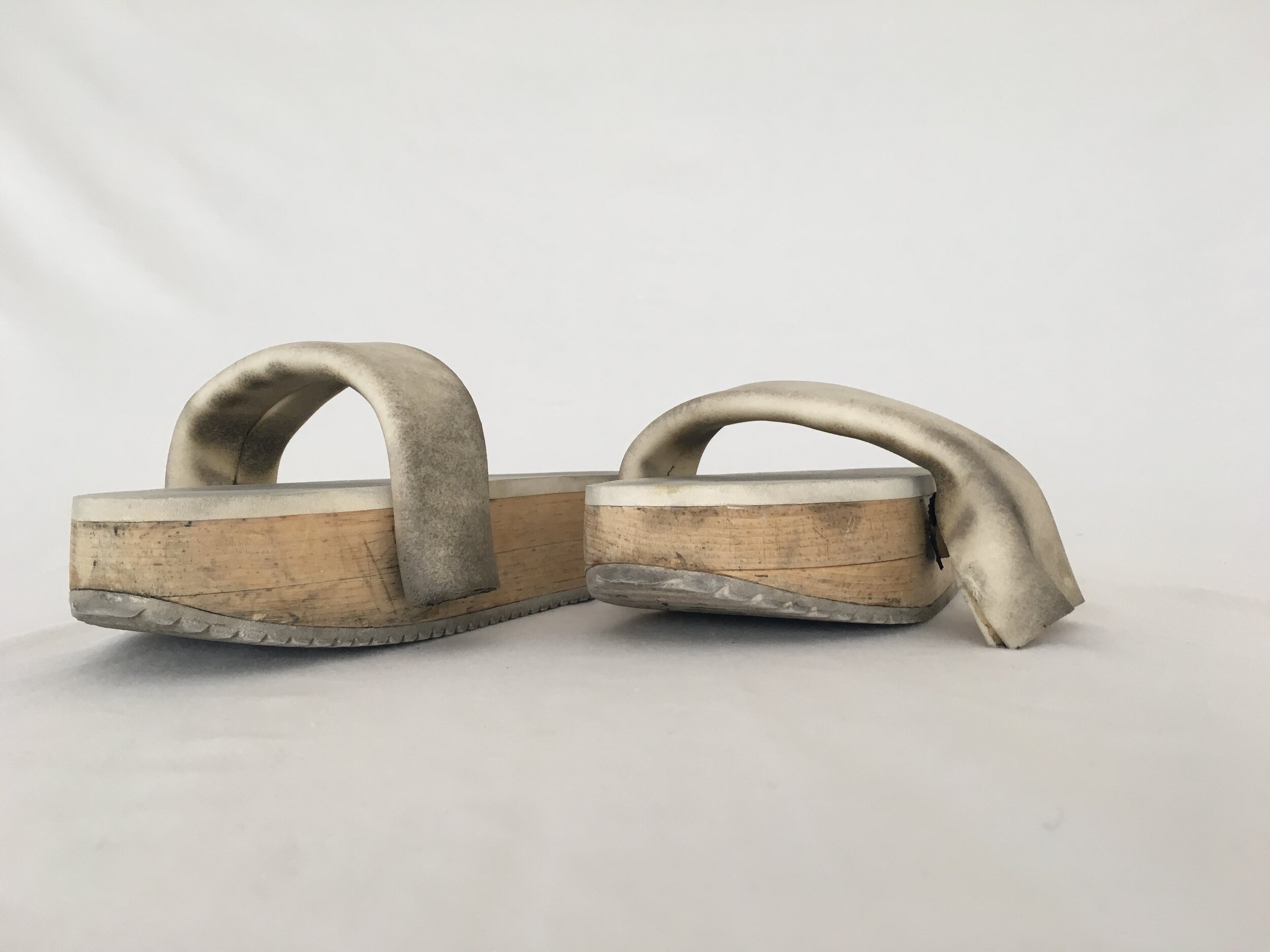











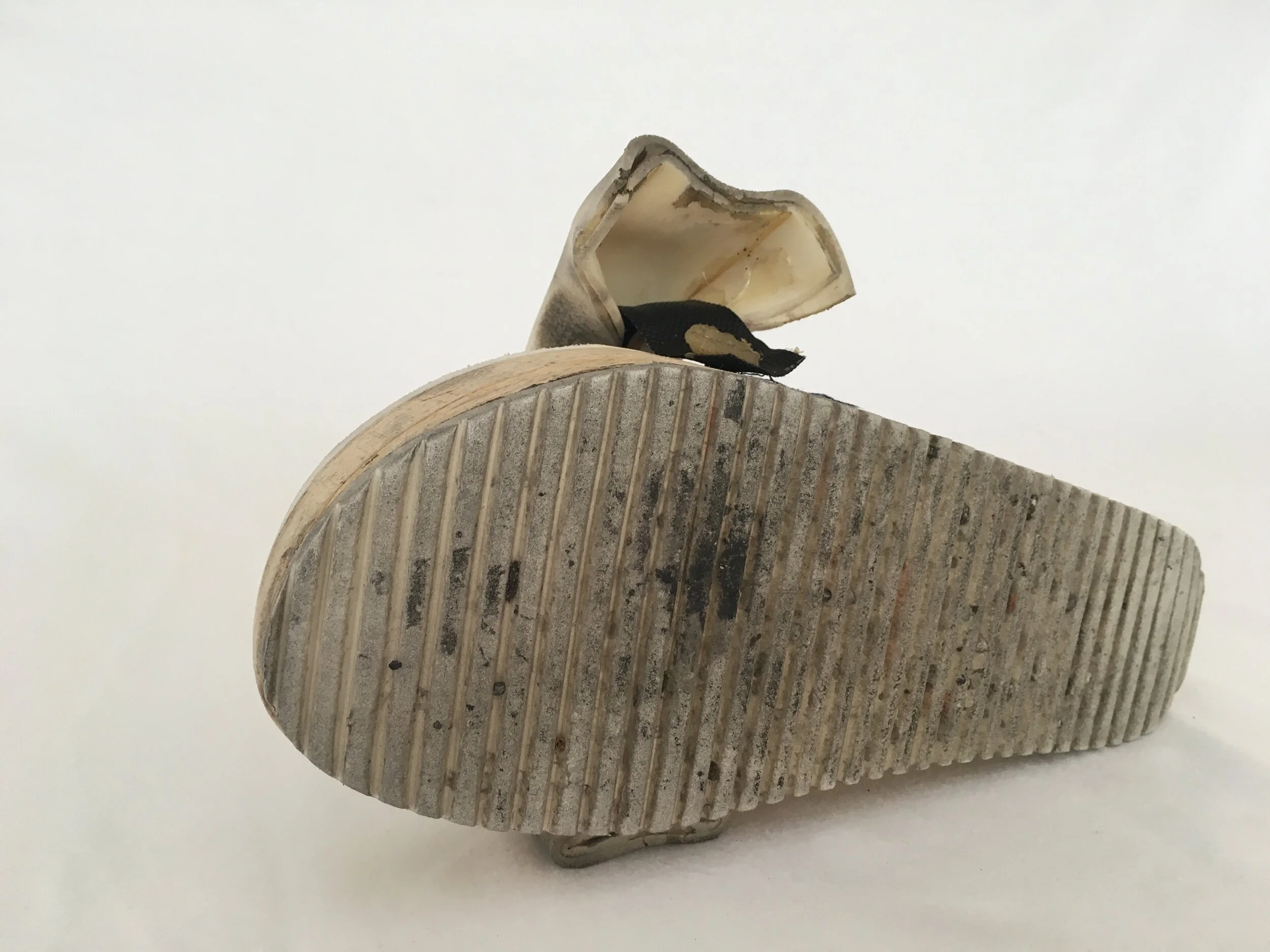

Towards a latex mouldform.
The flexible latex sole model was never made, as I ran out of money. (I was fresh out of college and waitressing.) I had fabricated size 8 mould forms with various designs for economy of material and weight, but I had only the collaboration of a sort of predatory shop who wanted me to front all development and fabrication costs but put their name on the product. I couldn’t afford a size run, and around that time I was hired to manage production at someone else’s clothing brand, so! the project went to the wayside and I took to figuring out how to produce luxury unisex clothing, which turned into two lonely and sunburnt years in the desolate and ever-reaching bleachlands and fabric houses of Vernon, Carson, Commerce, et cetera. Whaaatyagonnado! We made beautiful things and then I went to grad school to study Body Conscious Design, which is like a sort of embodied and sociologically informed ergonomics as outlined by design theorist Galen Cranz.


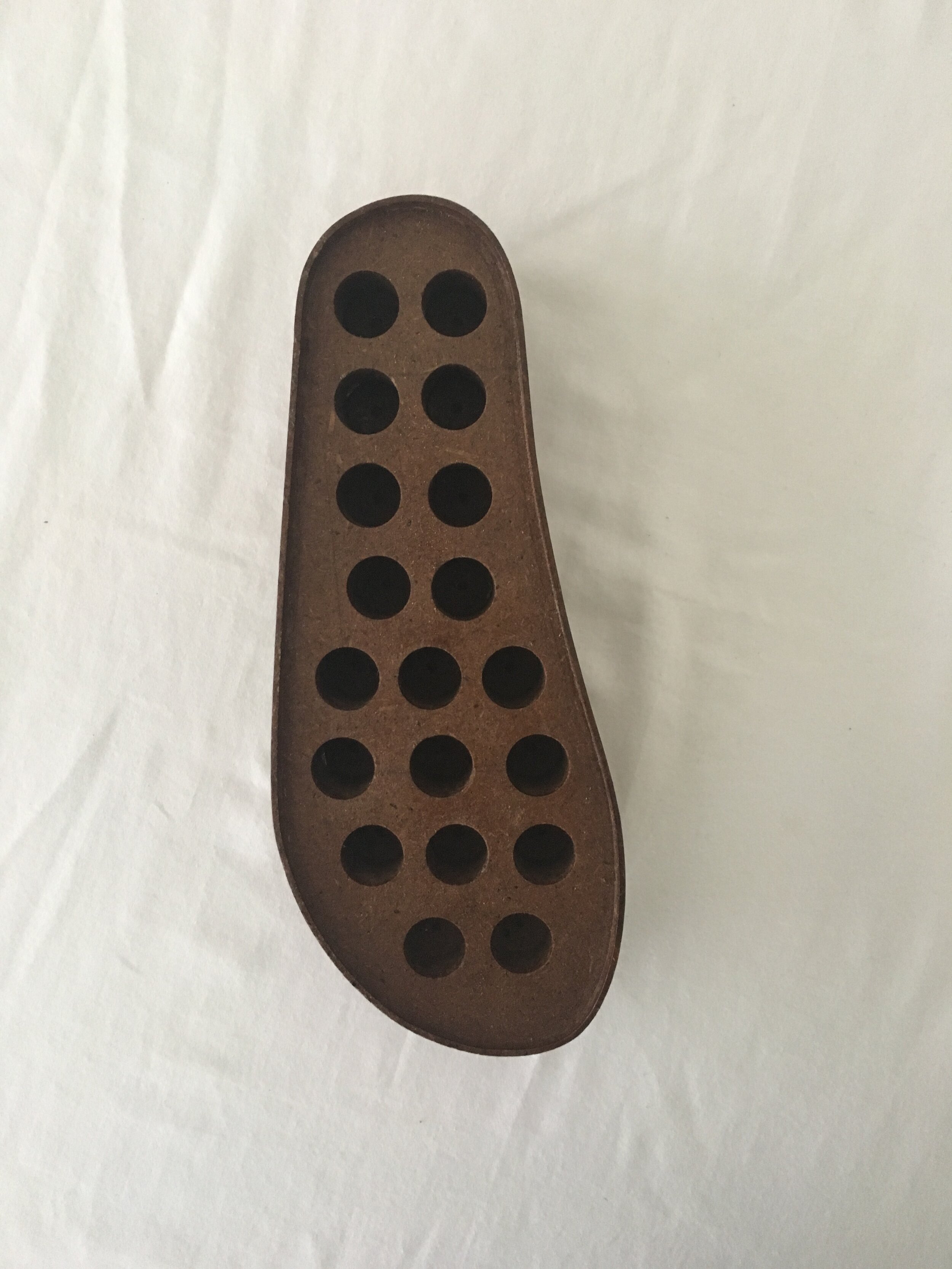
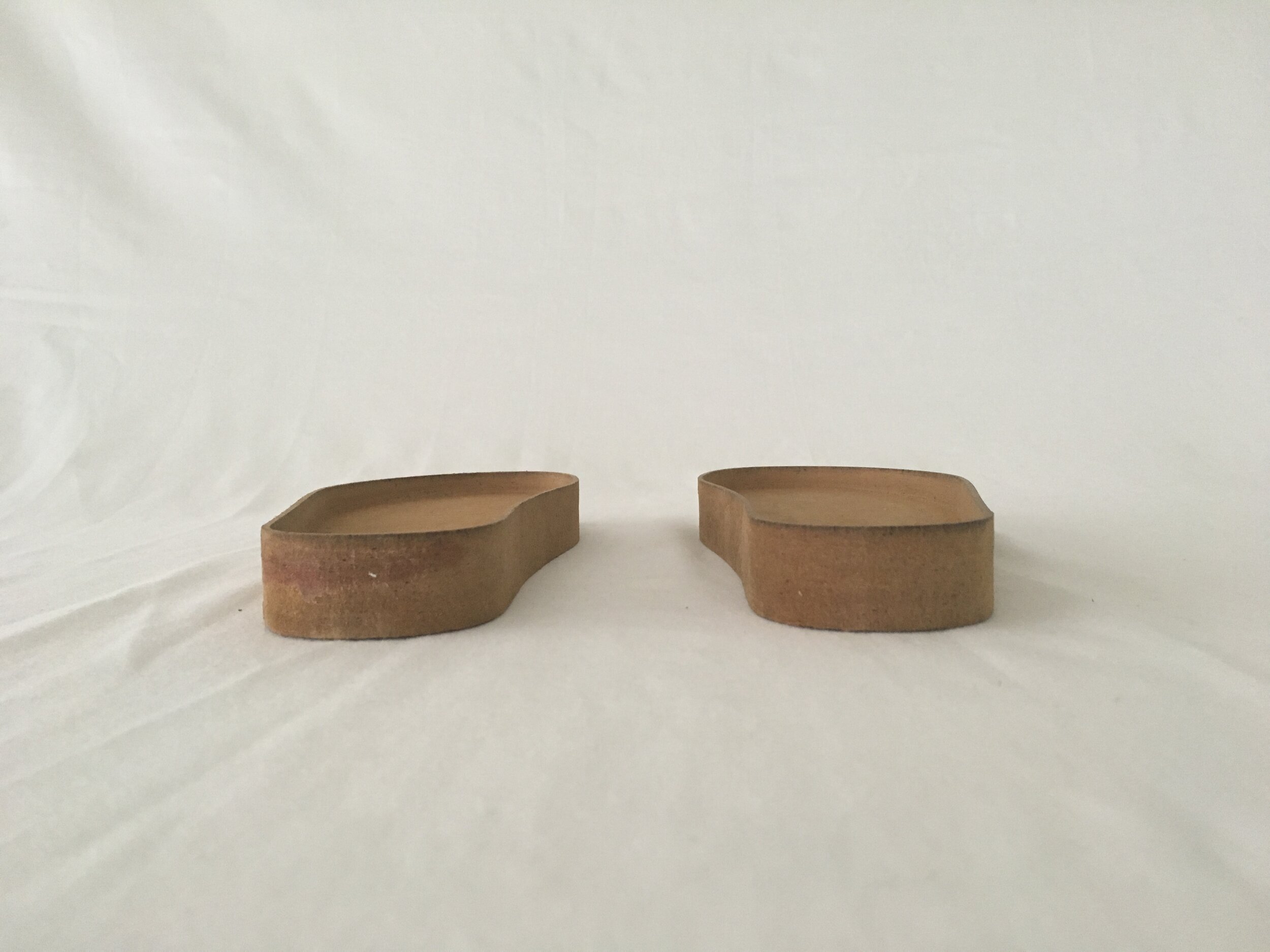
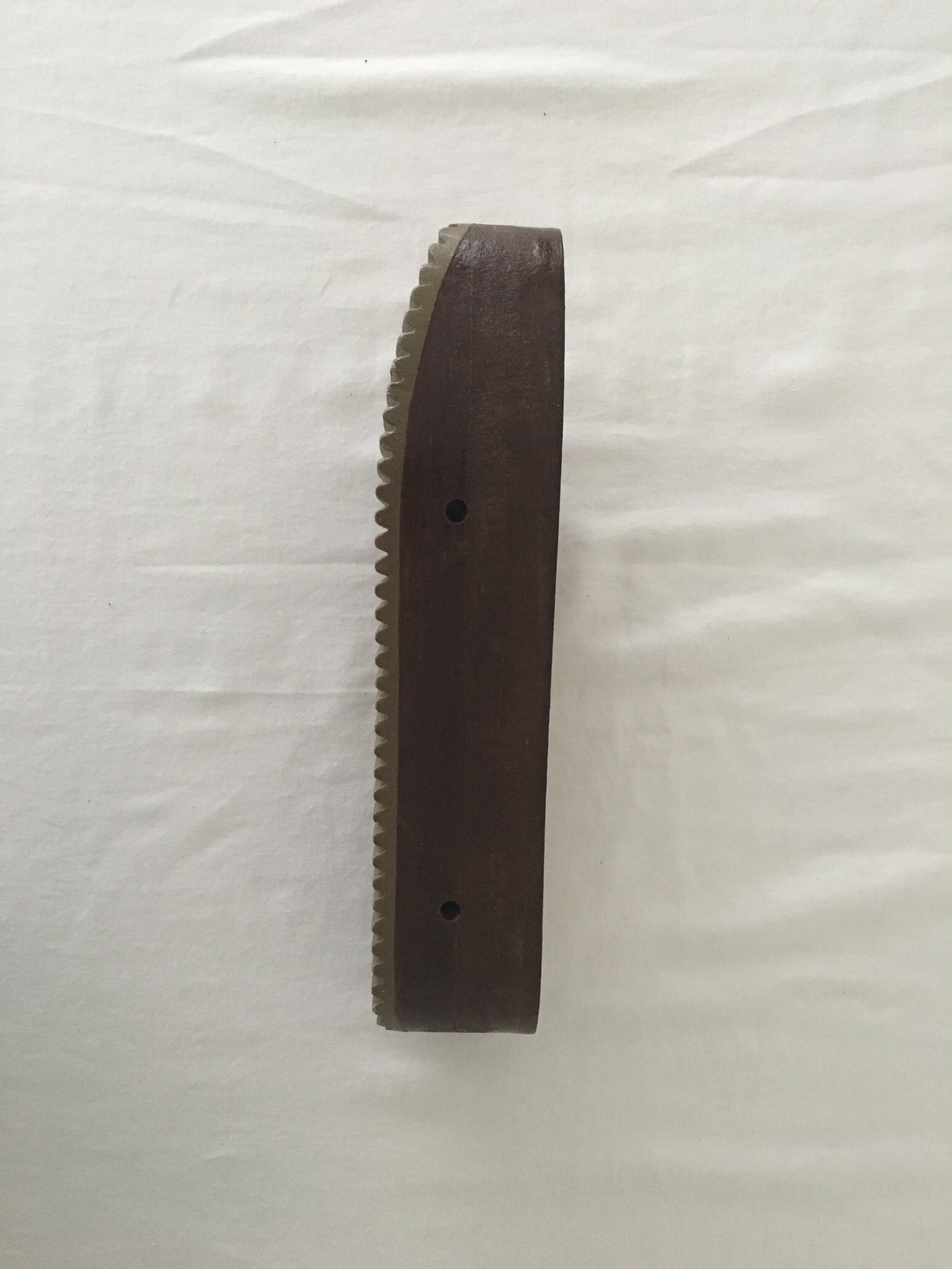

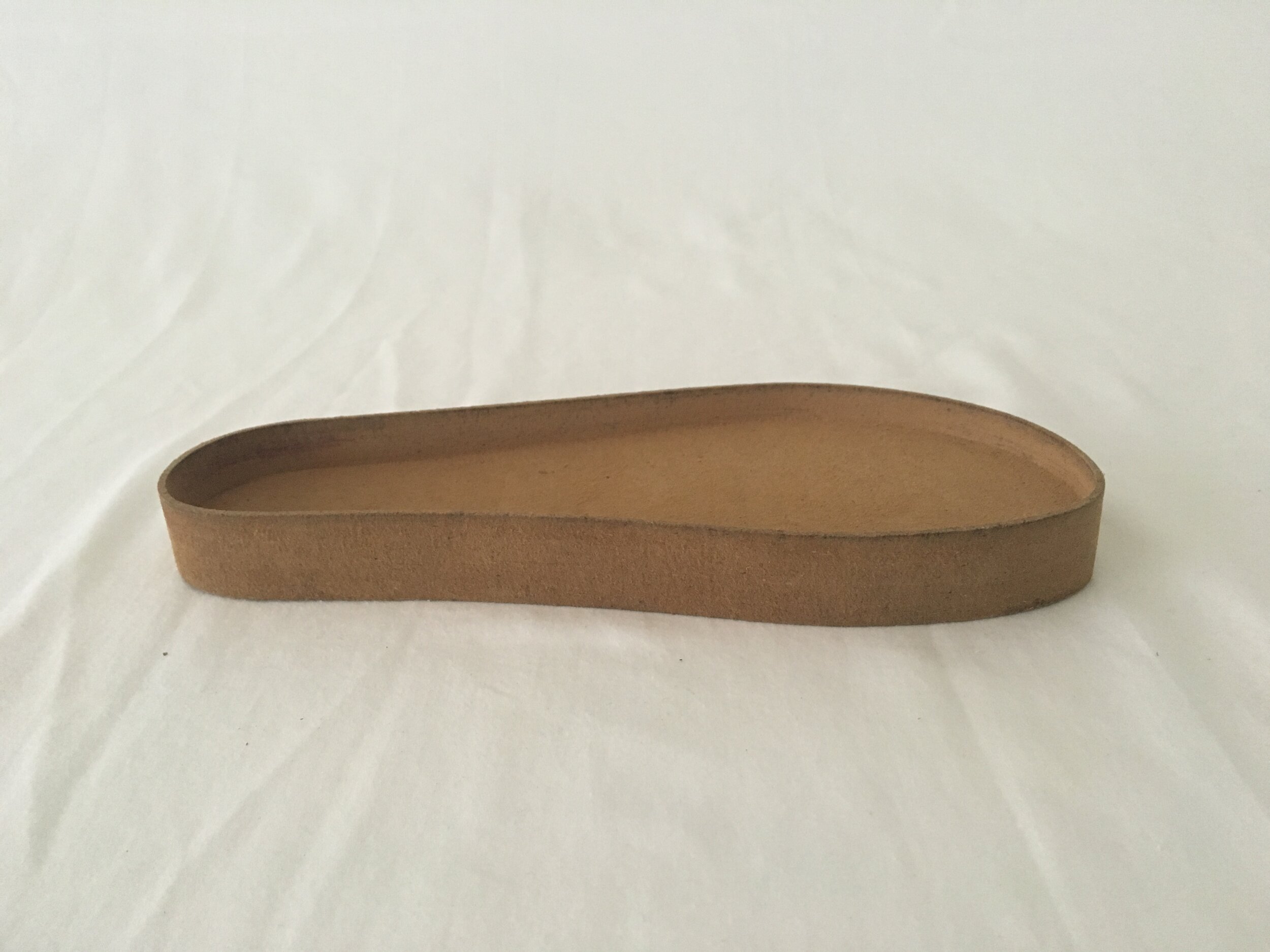

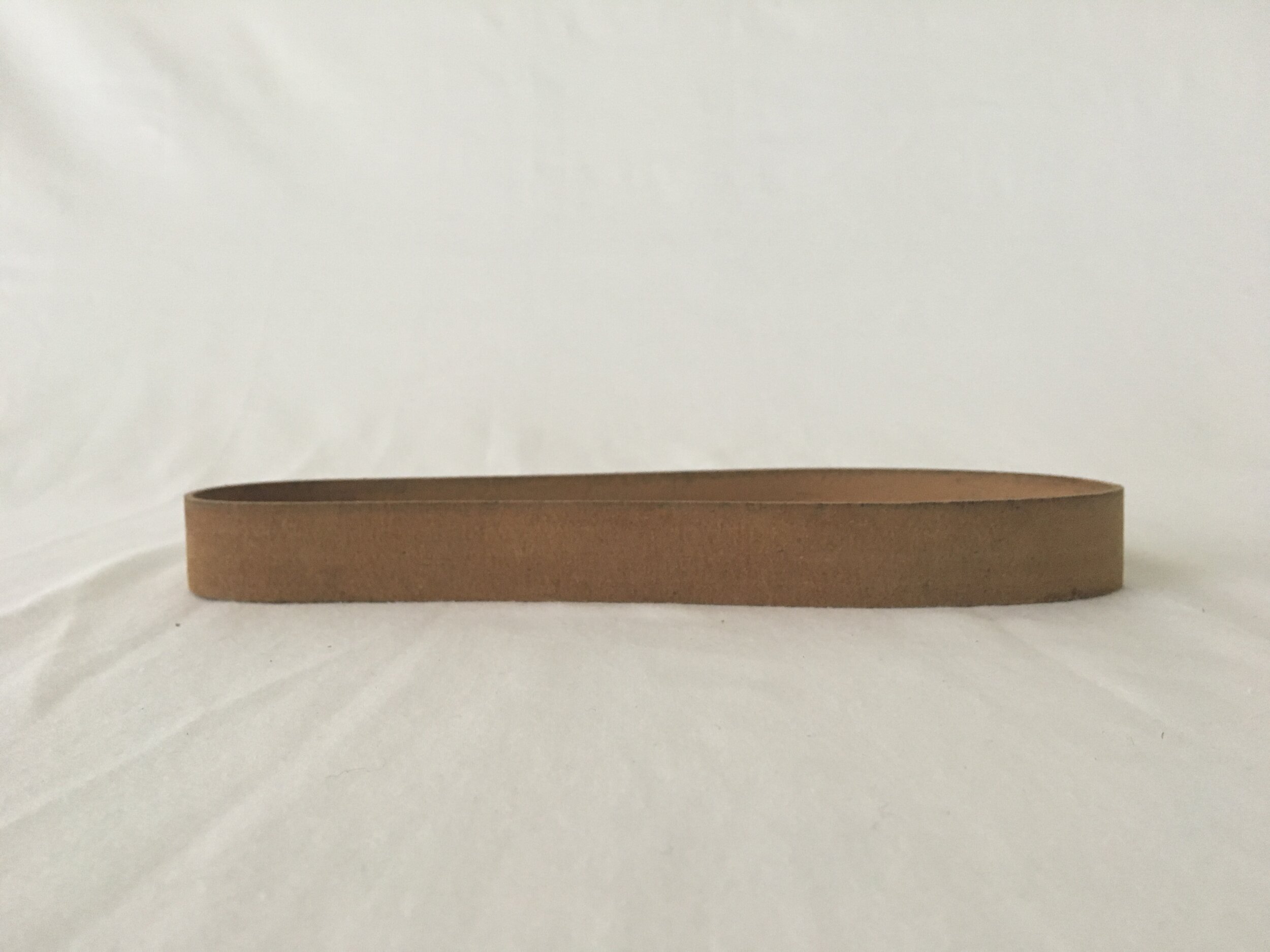




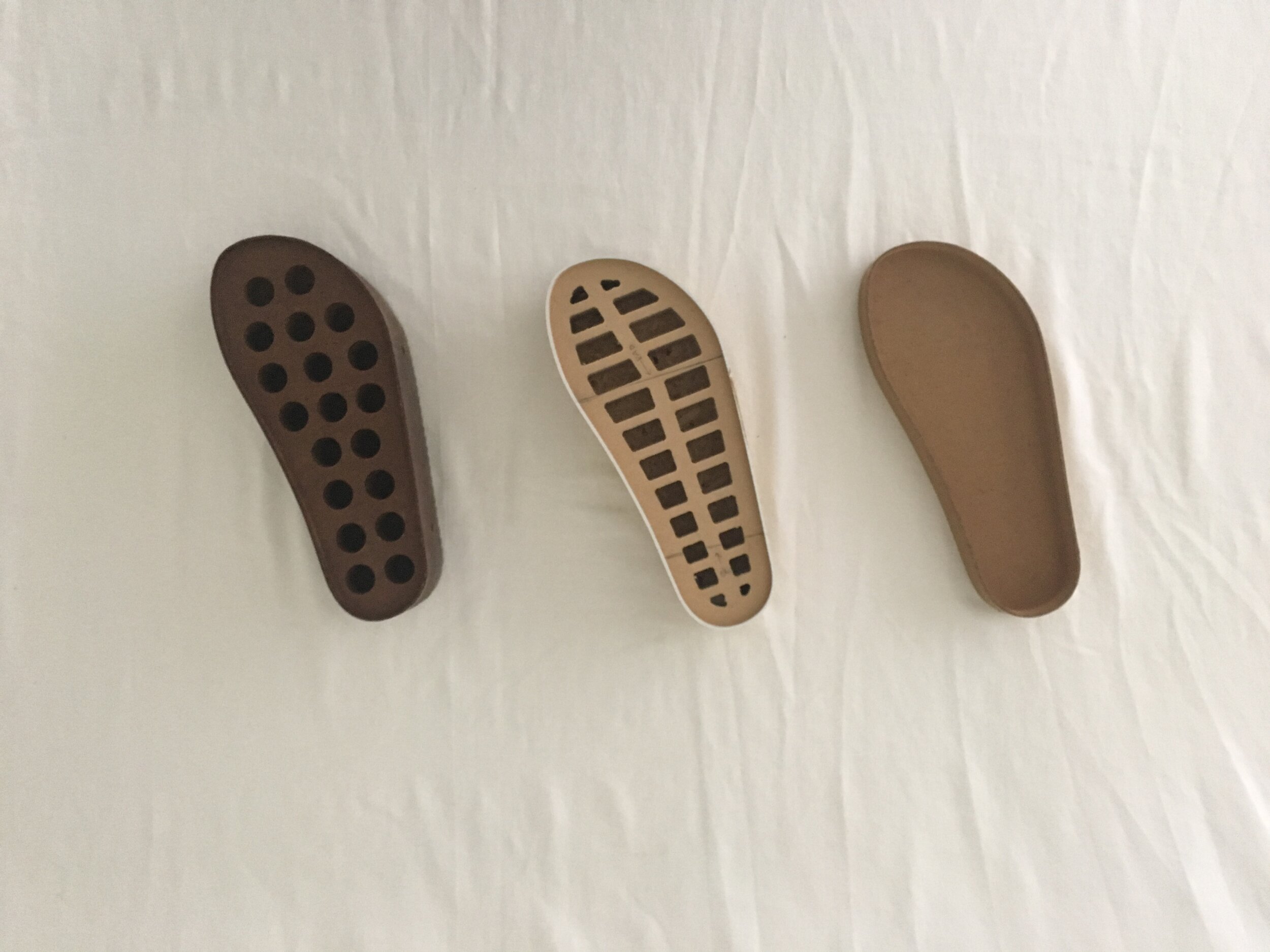
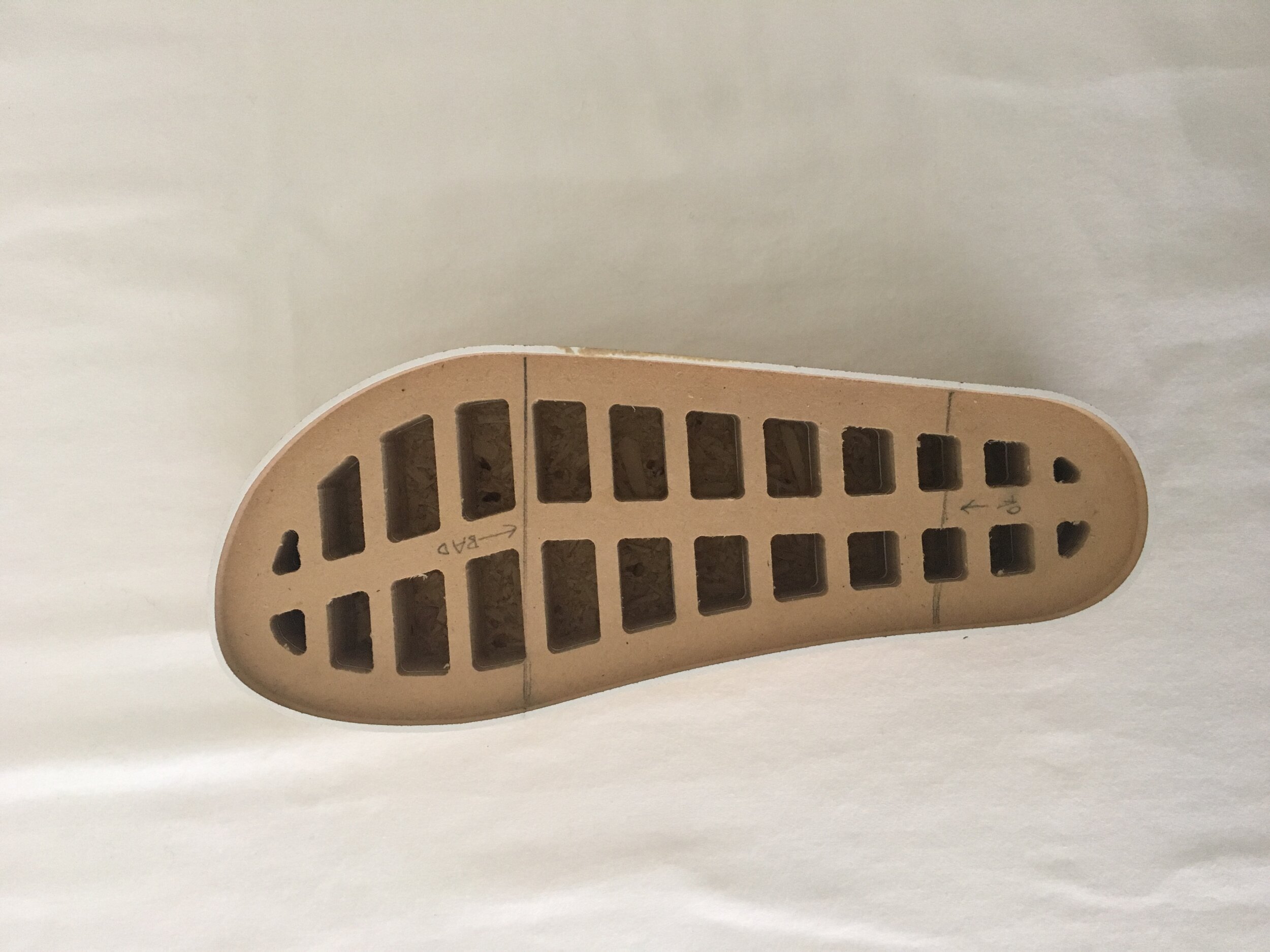
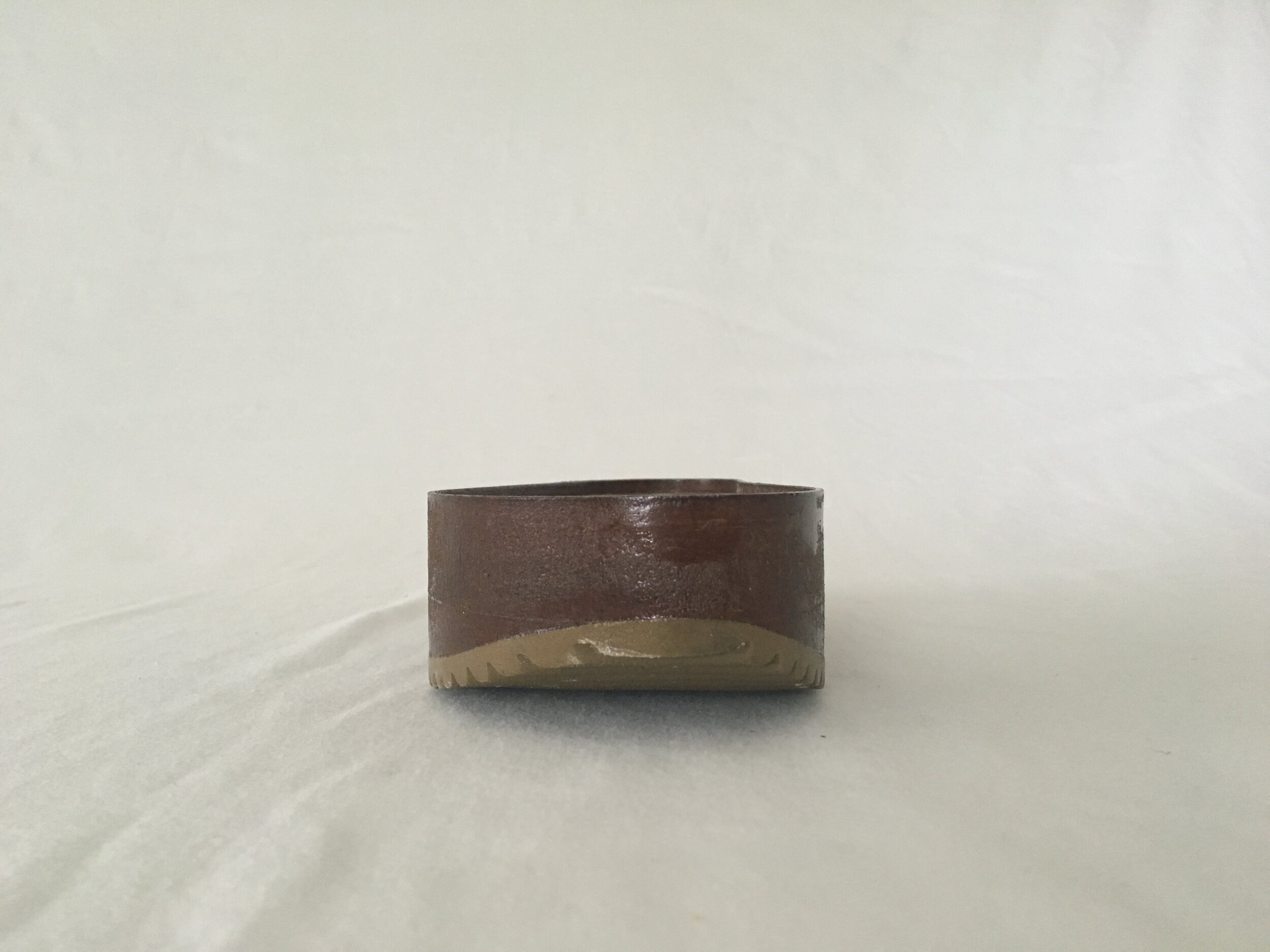
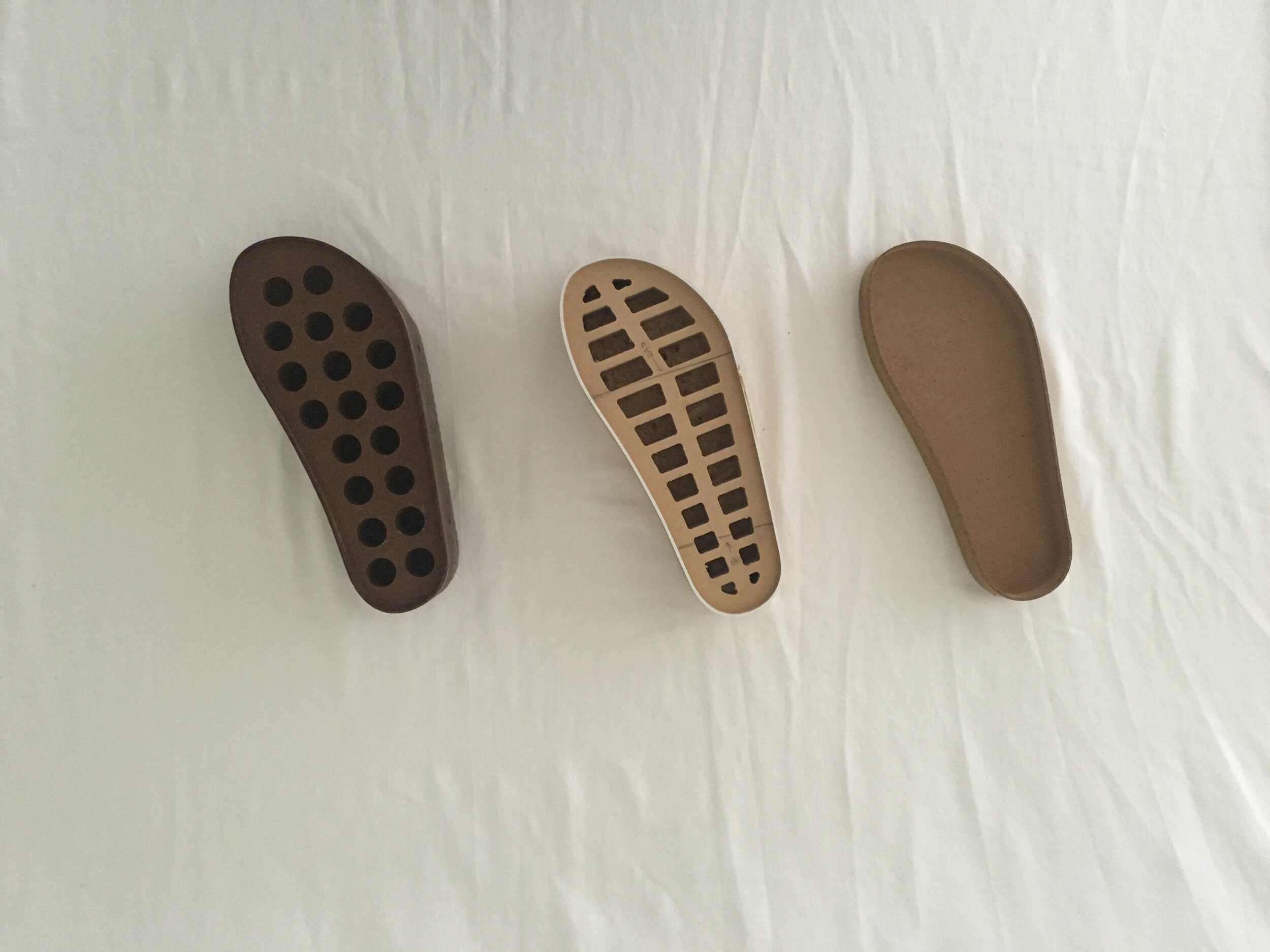
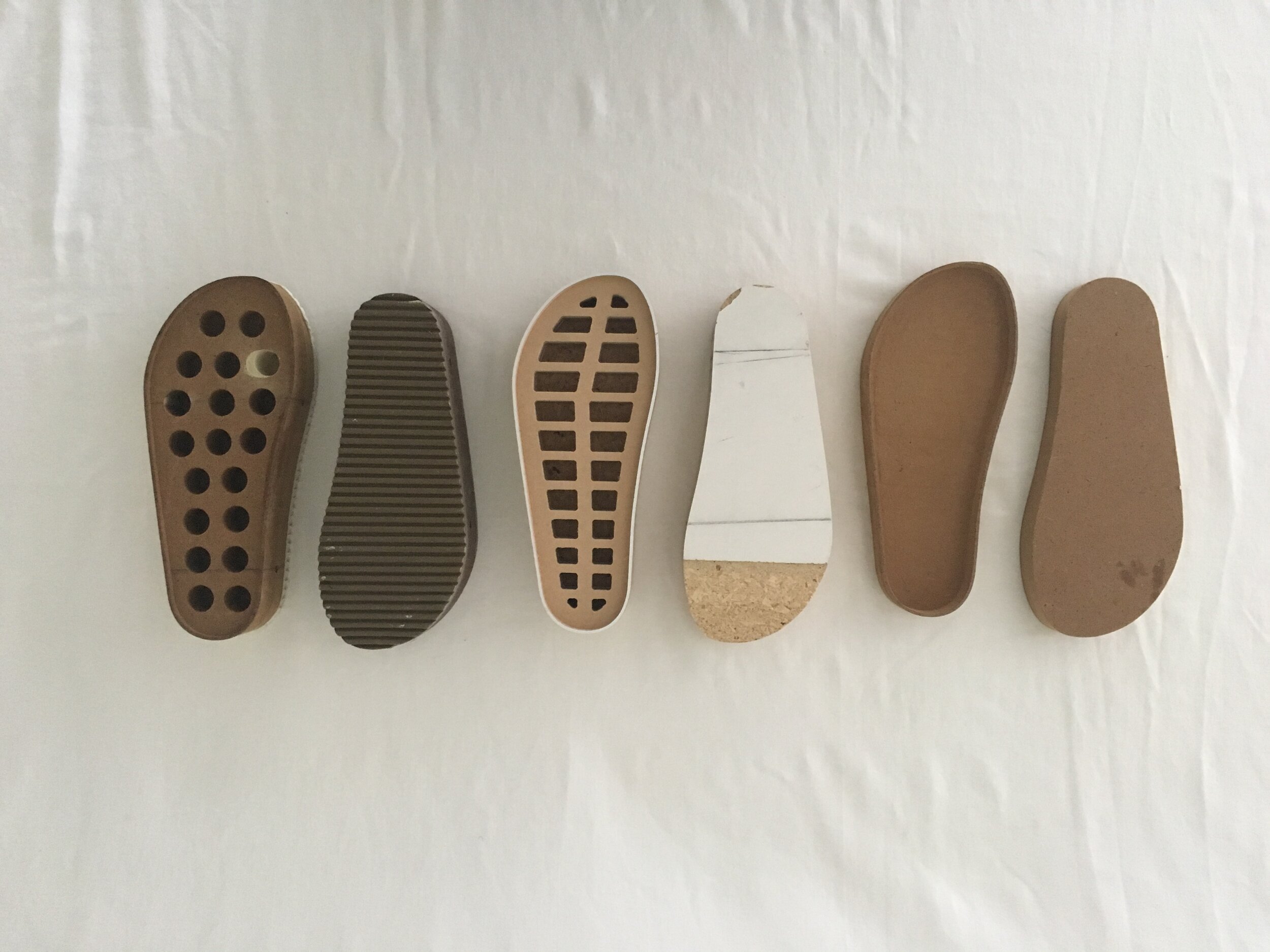
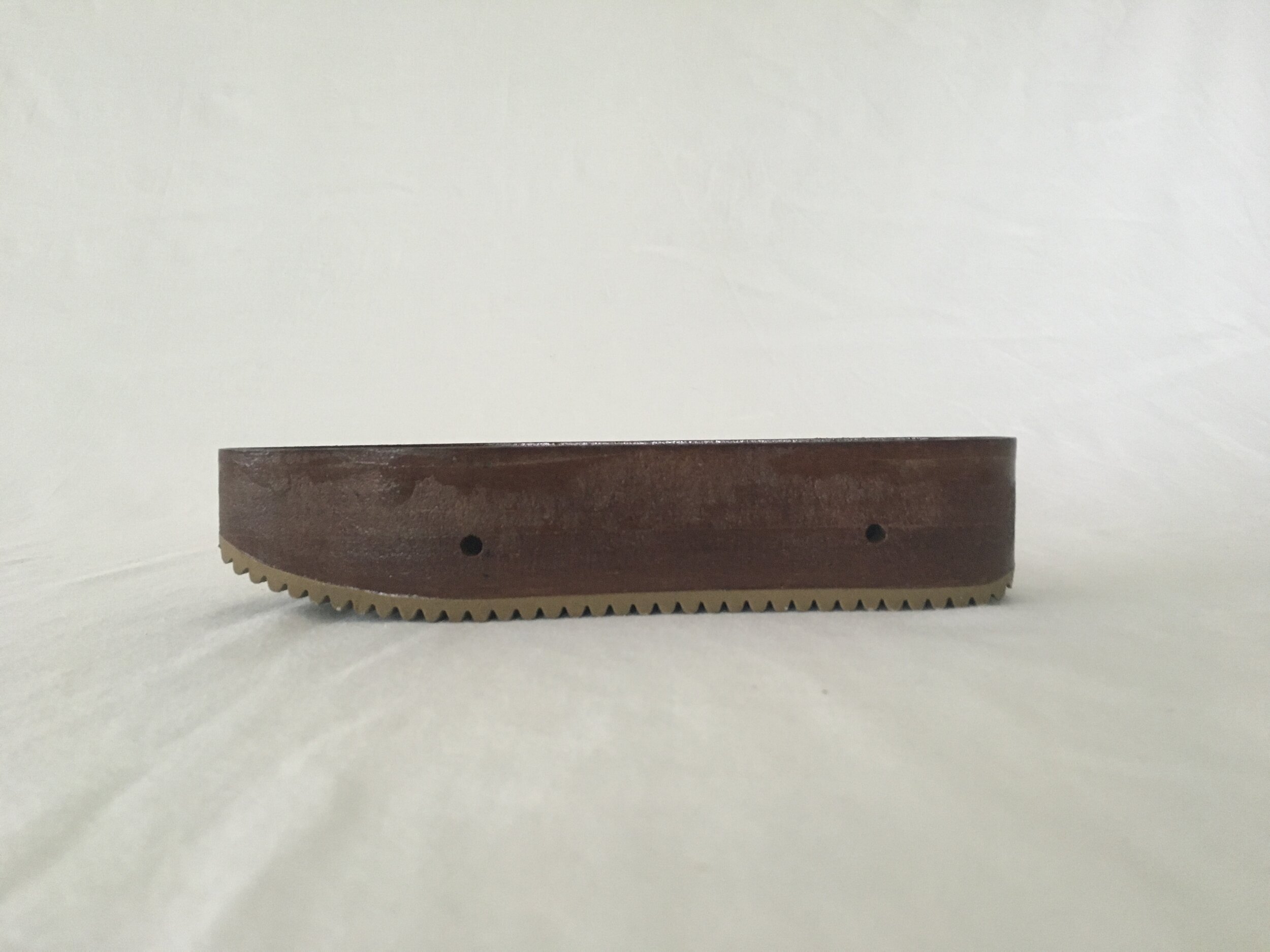
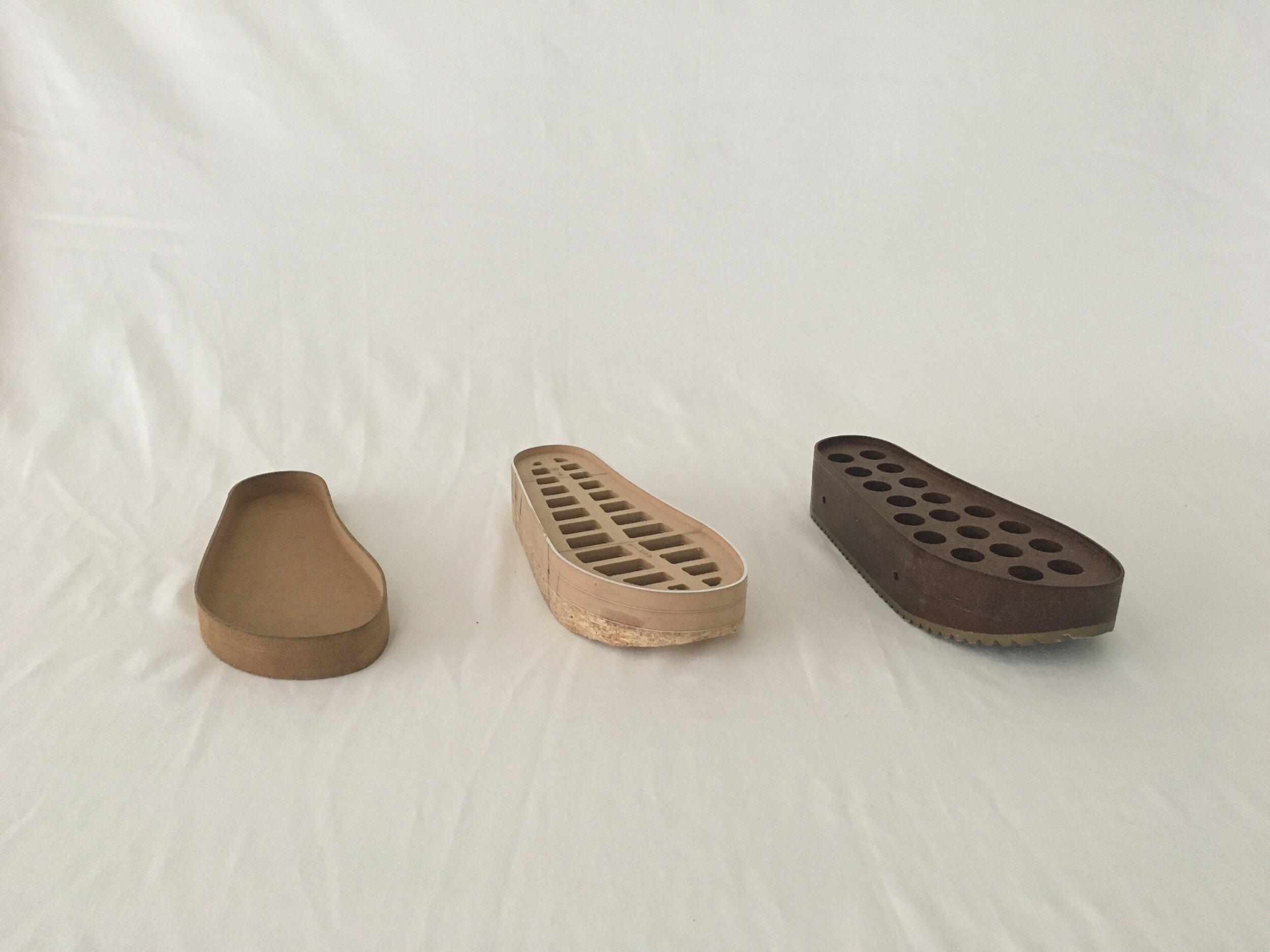
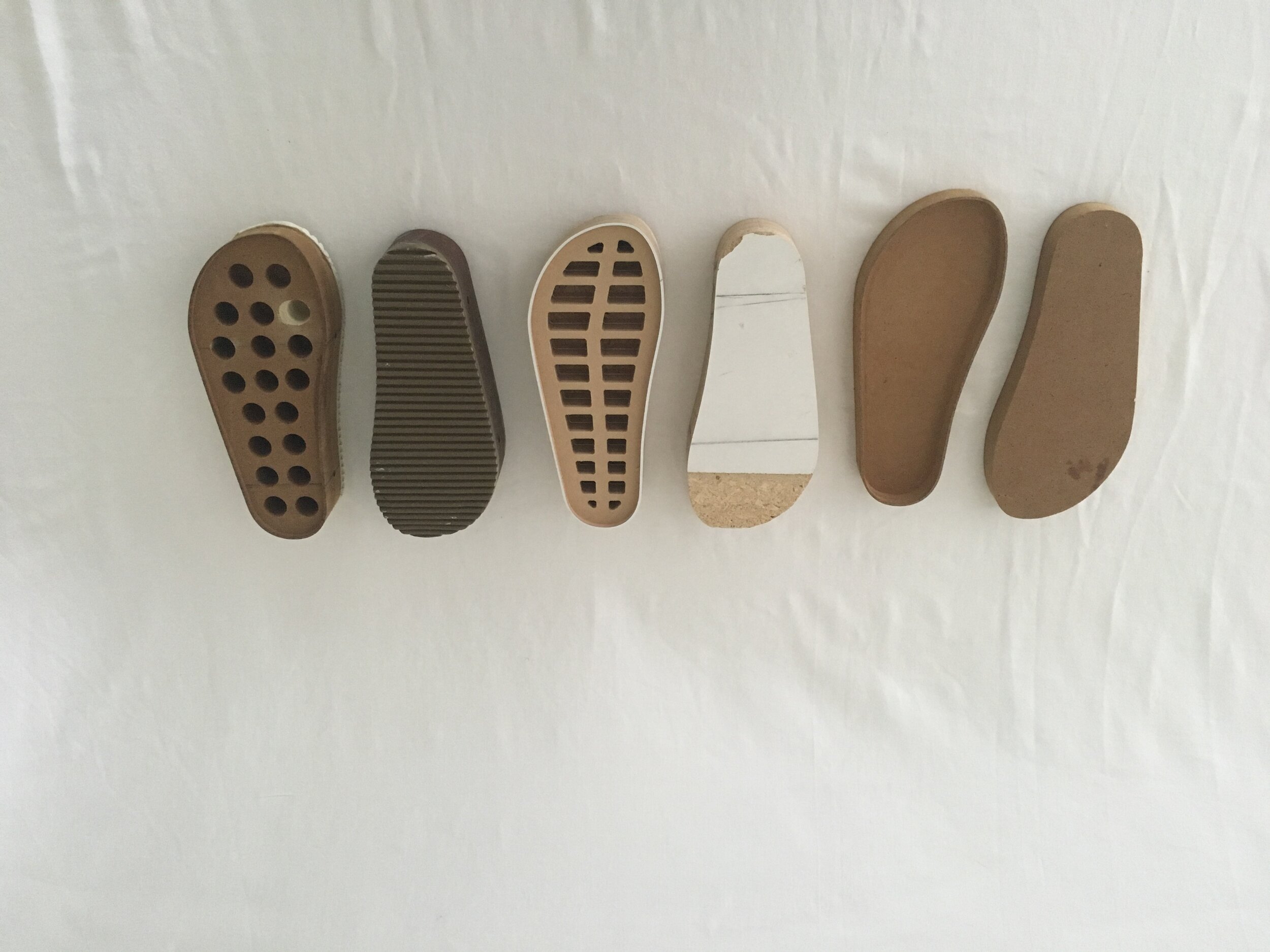

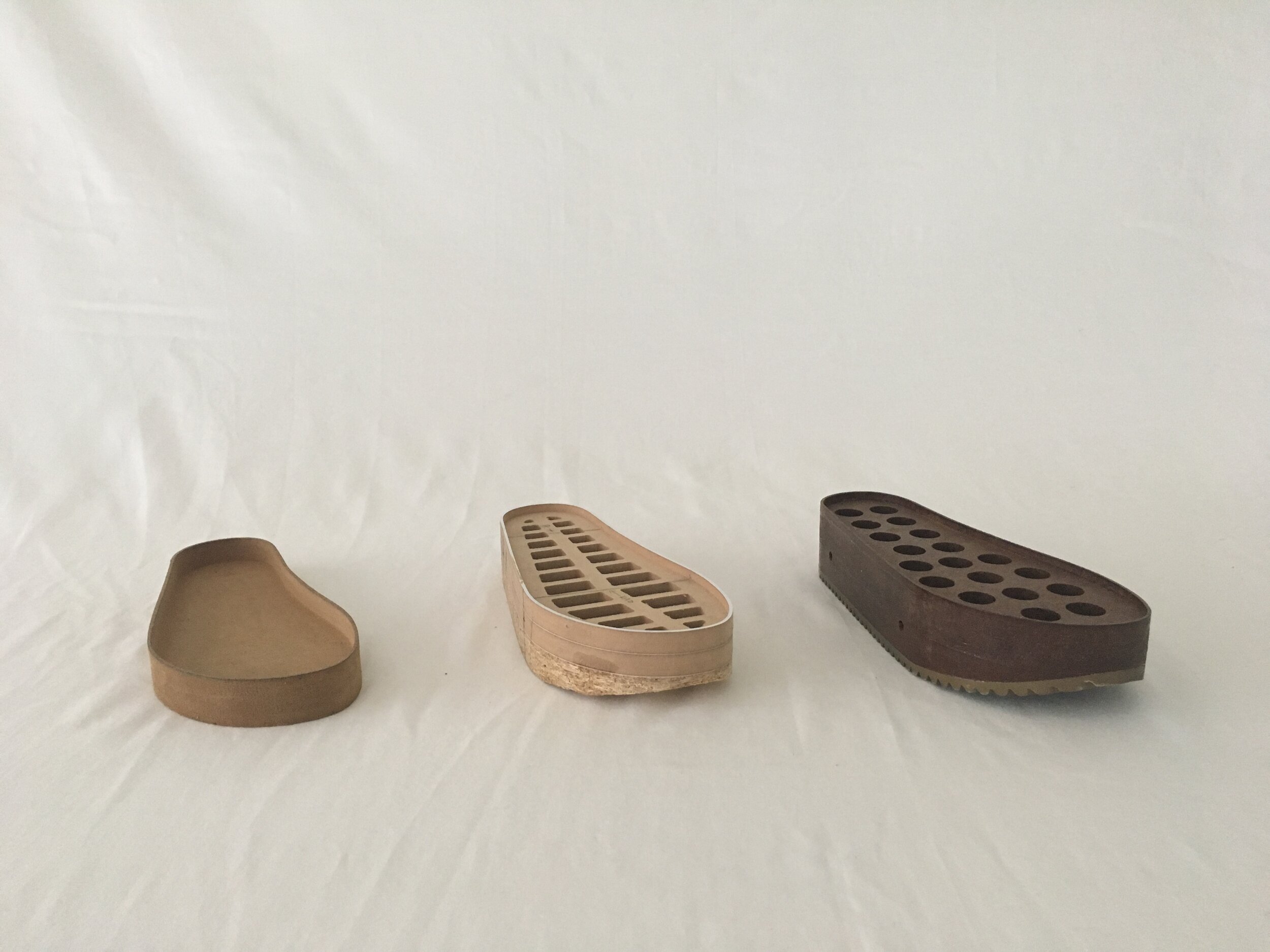
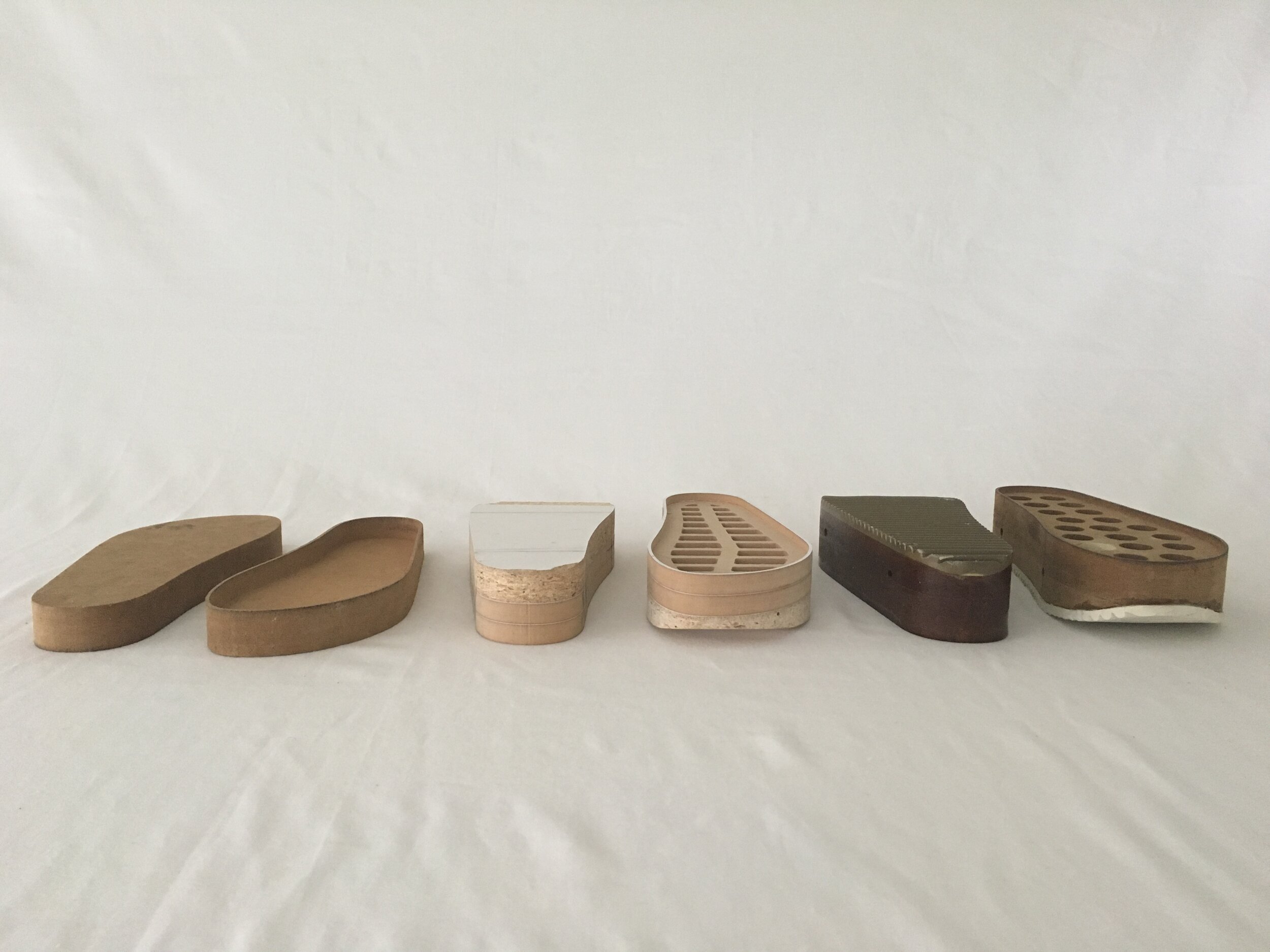
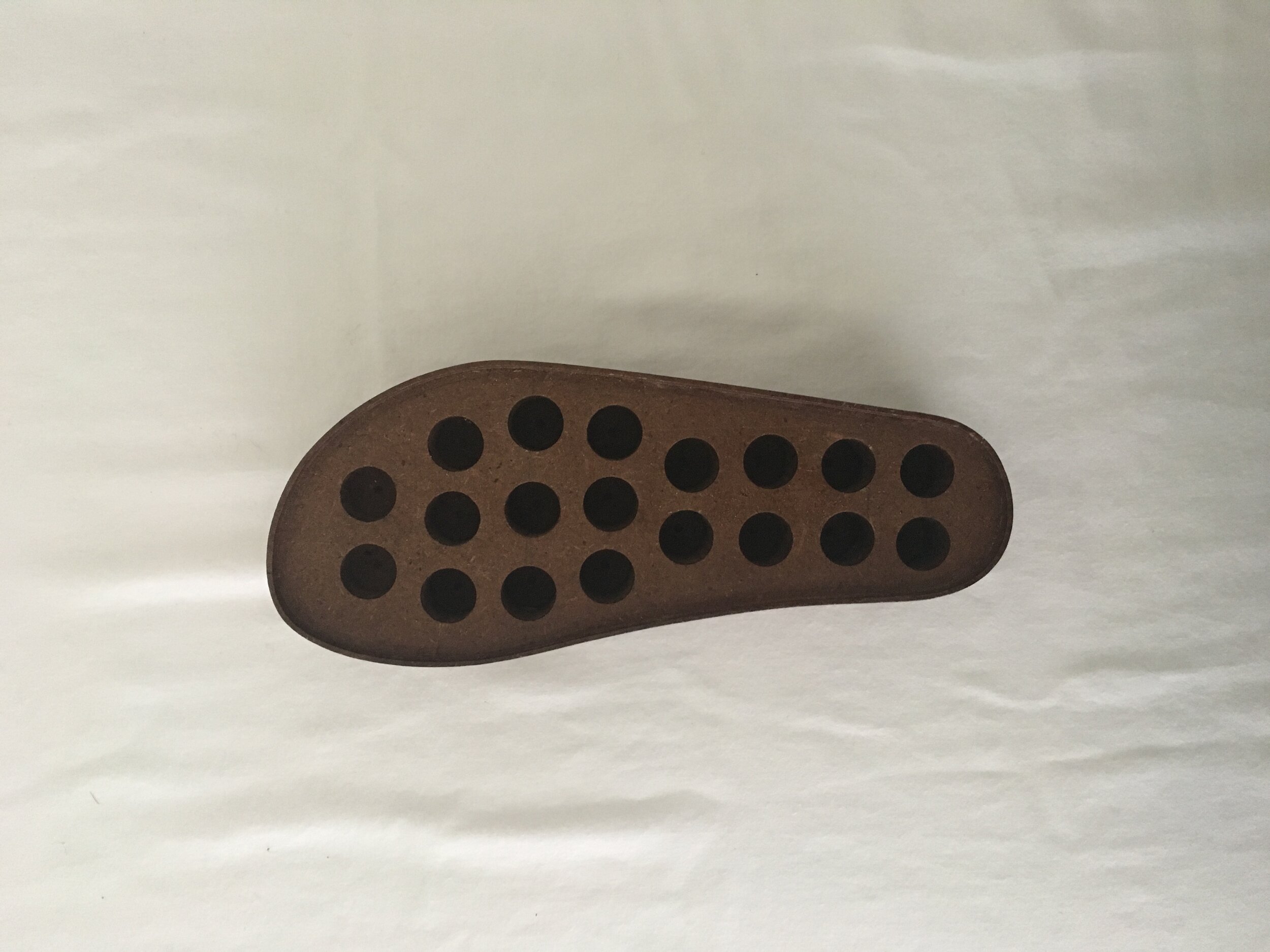
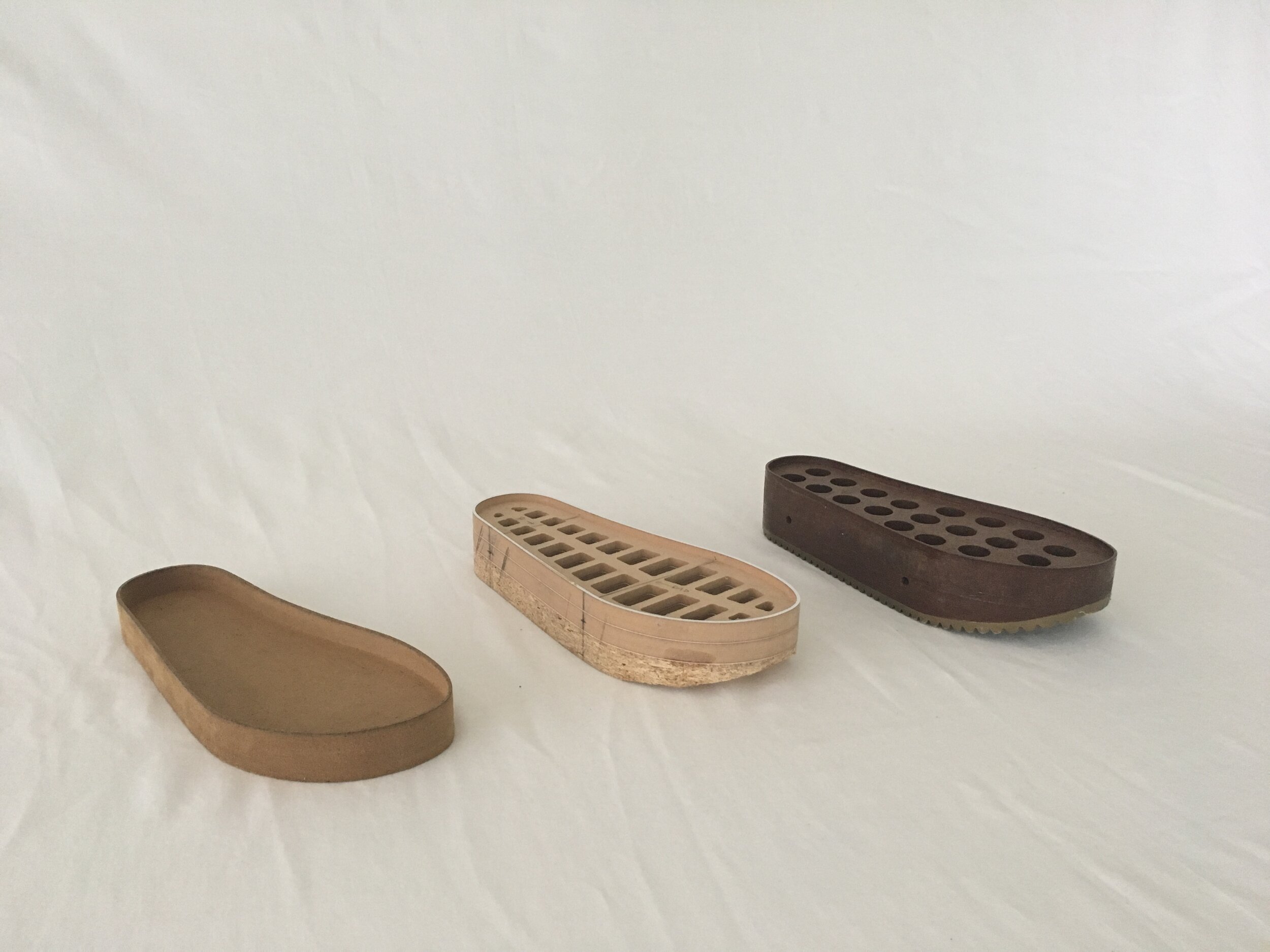
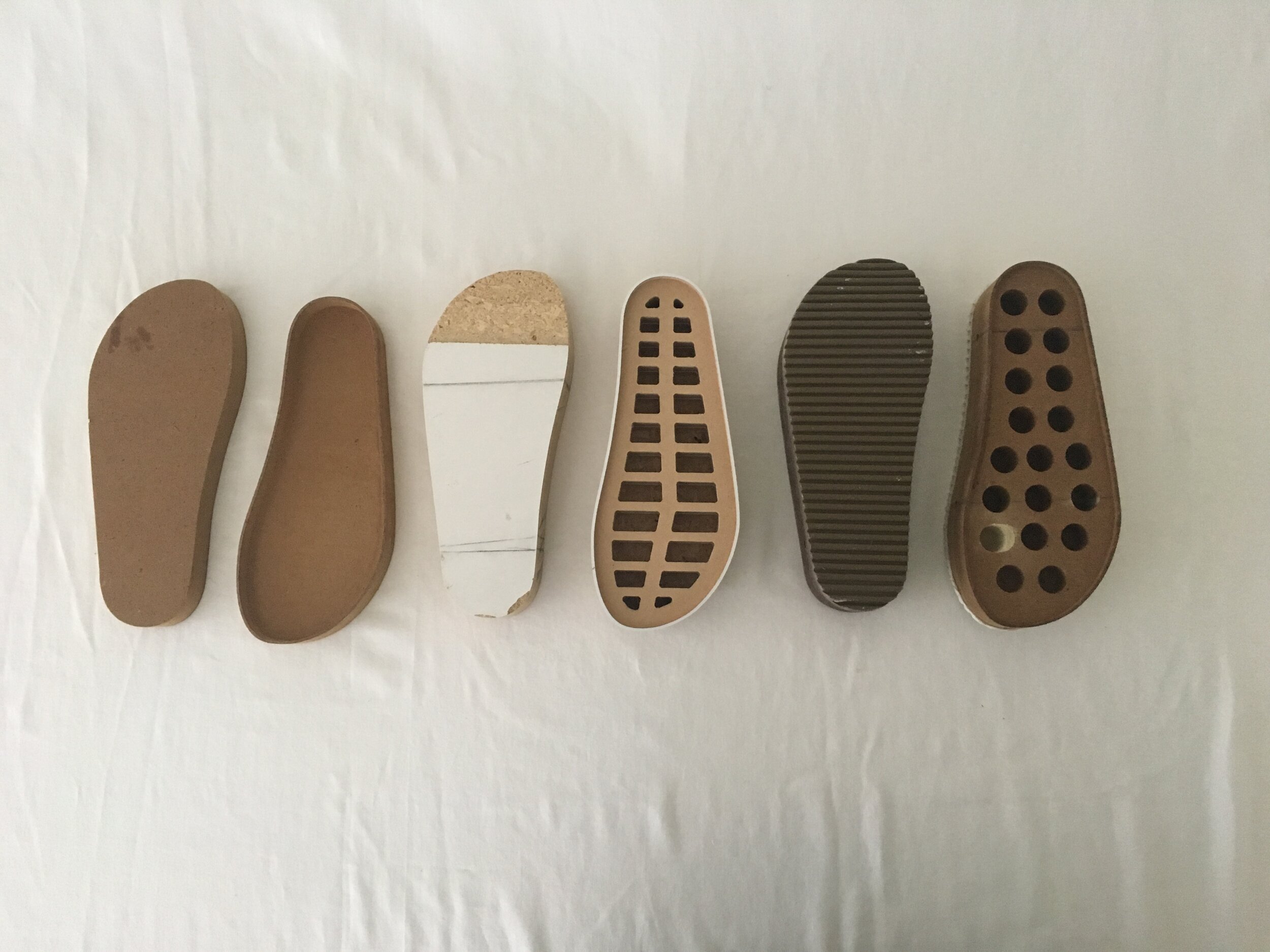
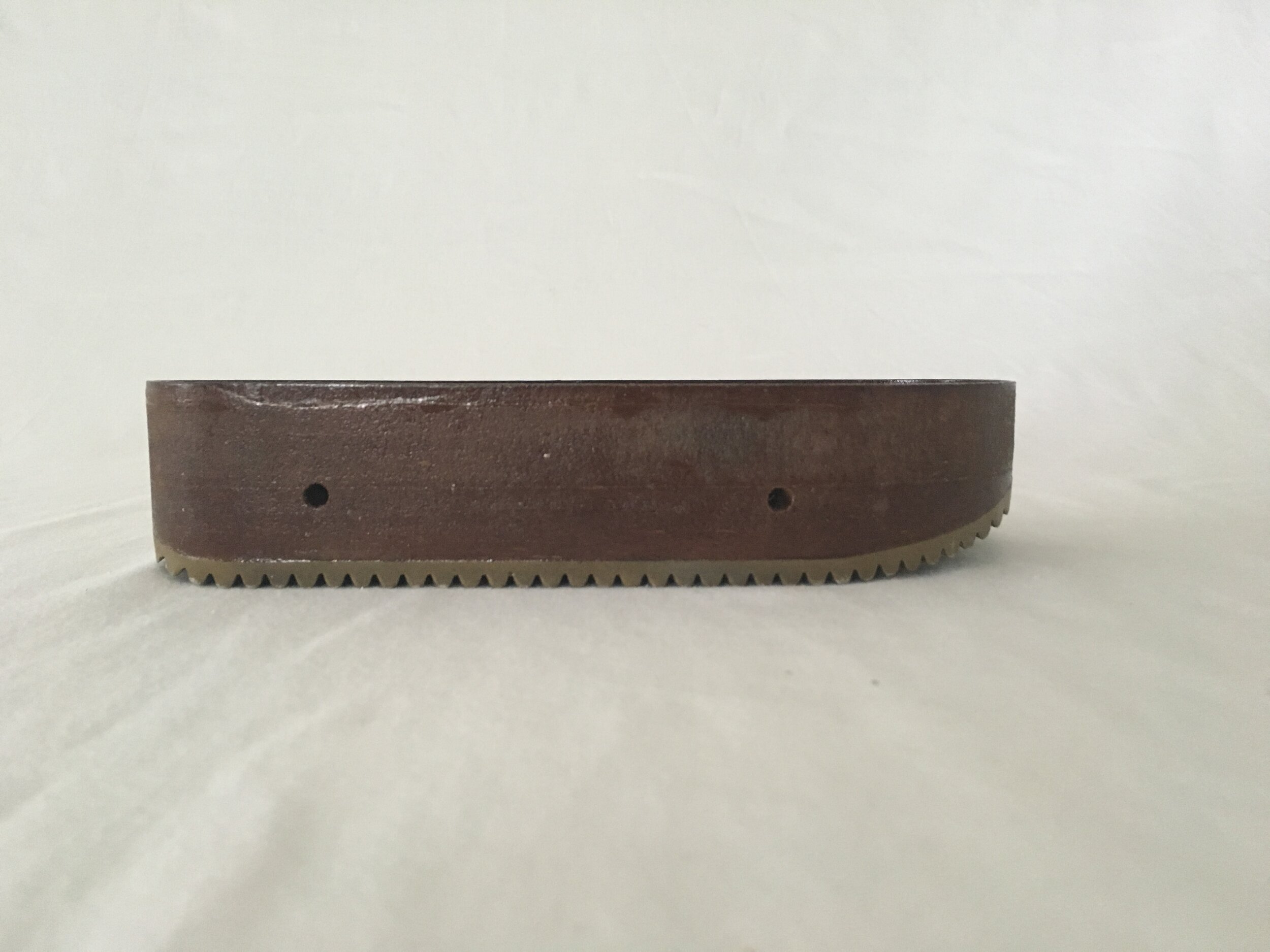
early iterative sketches (2013)
These were just me playing with foam scraps and glues from Saderma Leather (Los Angeles’s only shoemaking supply store, having bought out all the competitors in the 80s and 90s). I was figuring out possible materials and shapes for soles, insoles, straps.


















